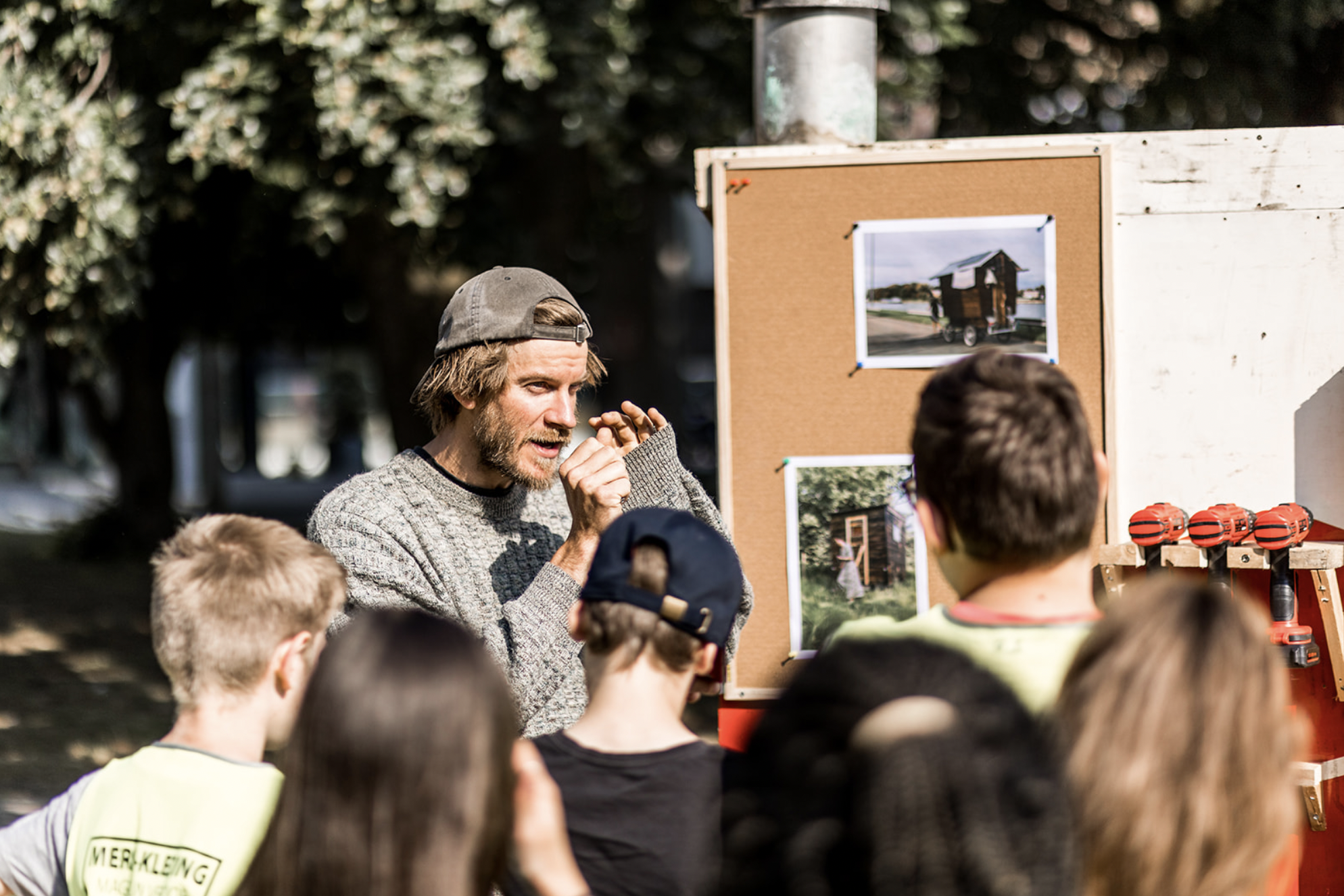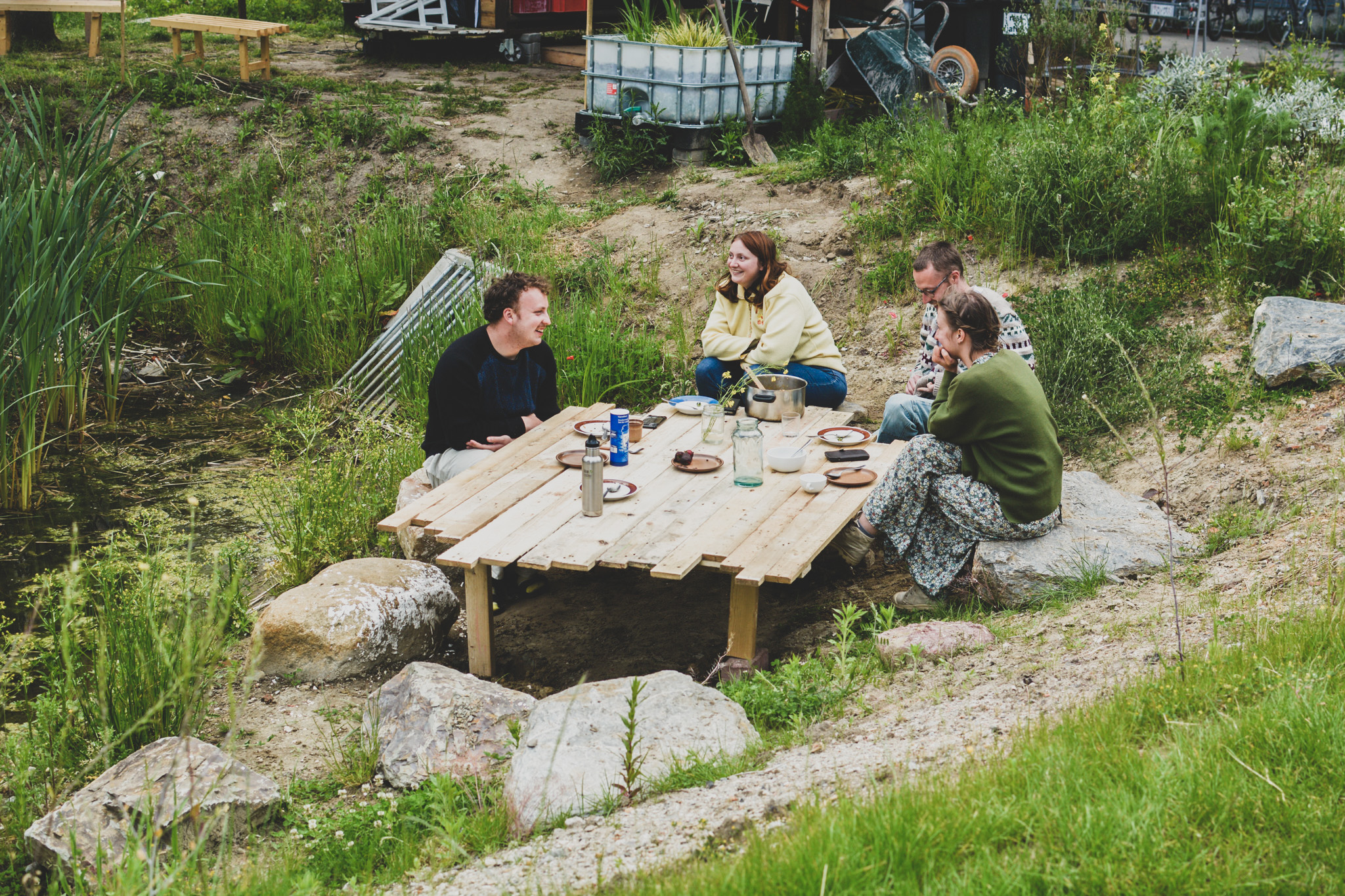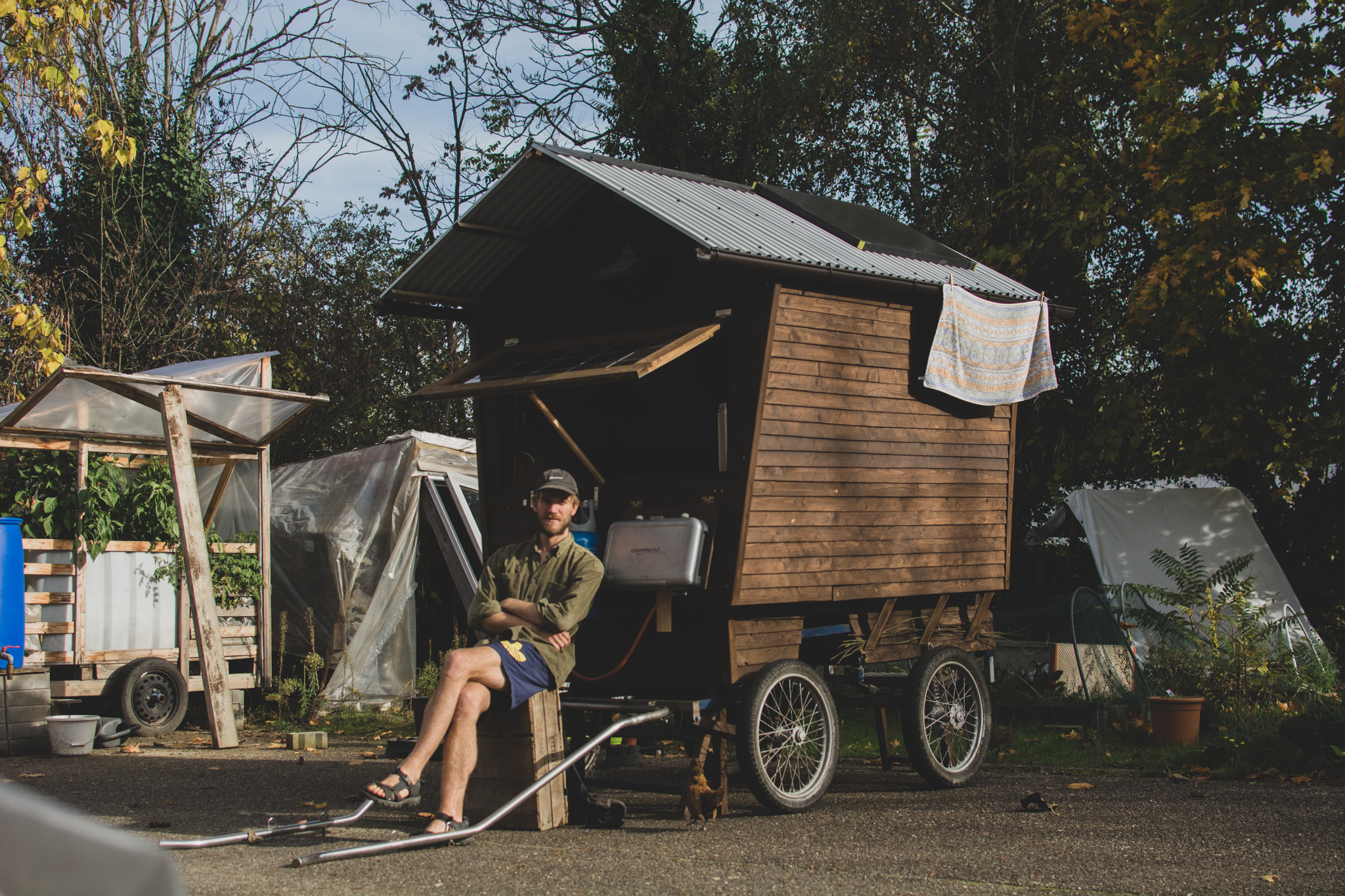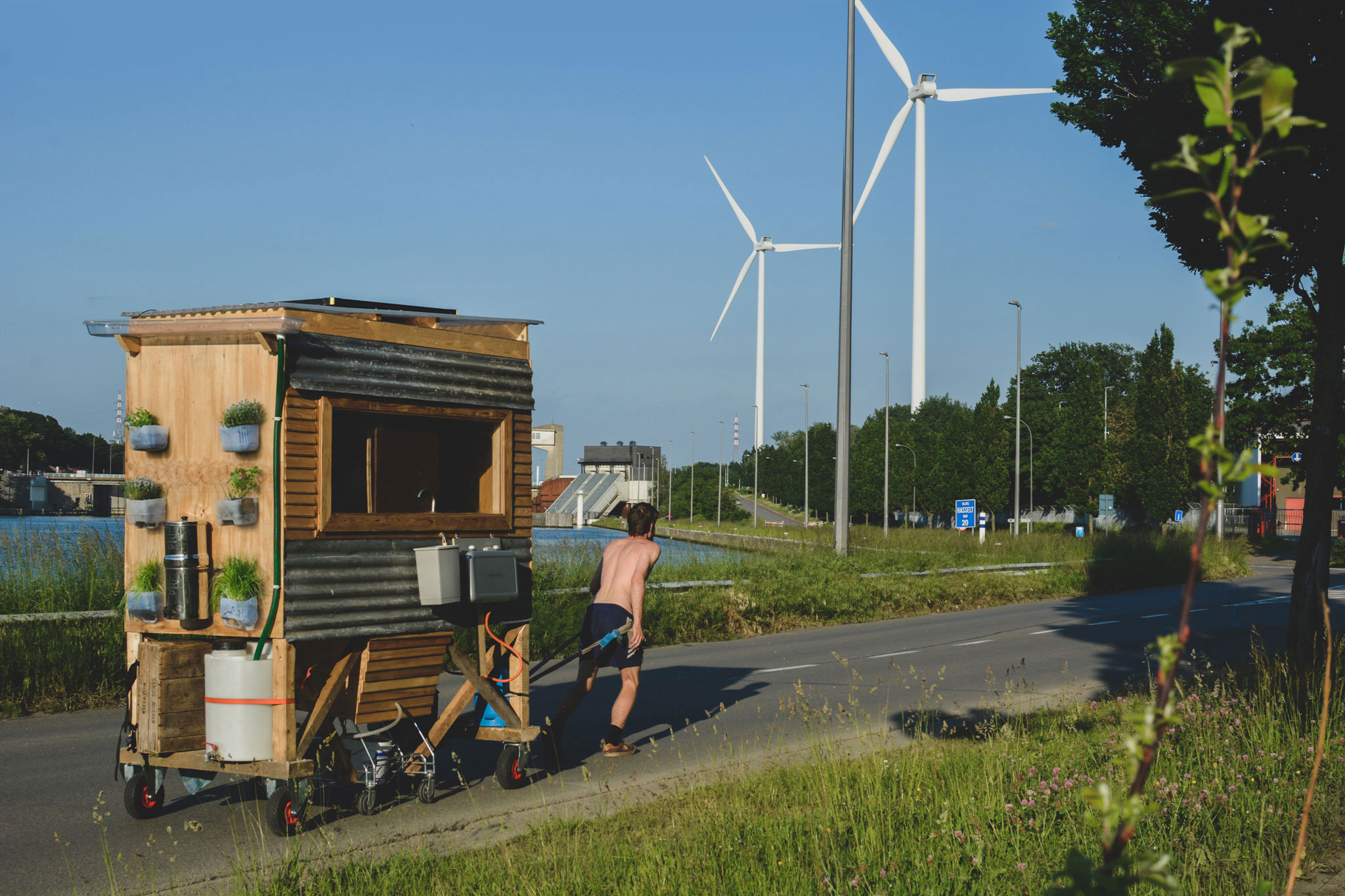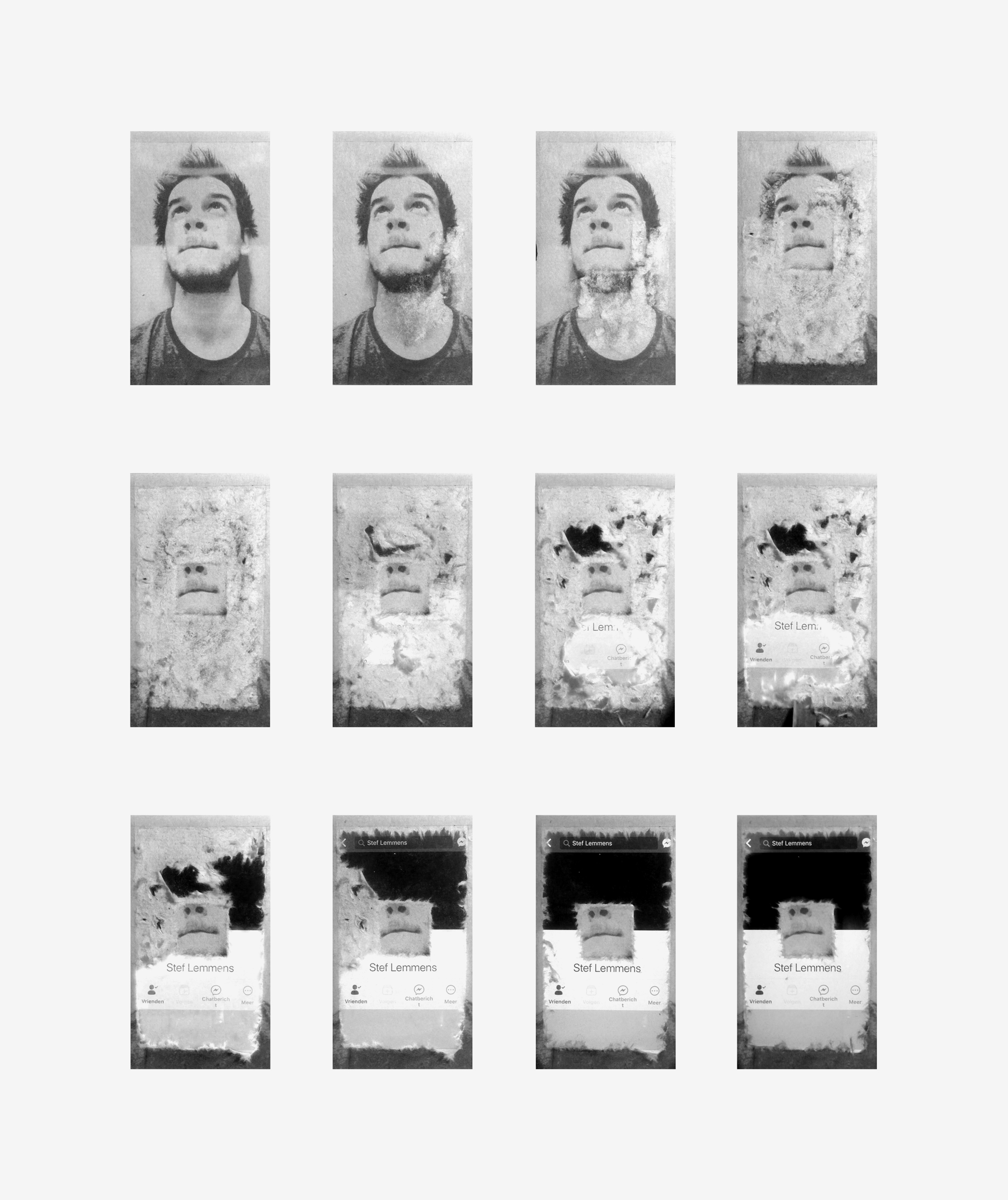About nr. 1
“I try to surround myself with a constant necessity. I don't want to change, I want my environment to force change upon me. This way it feels more natural, more instinctive. Like a weathercock that turns with the winds. But instead of adjusting my course with ease, I want to be able to turn around and stare right into the wind. I want to look change in the eye and question its truth in front of everyone to see.”

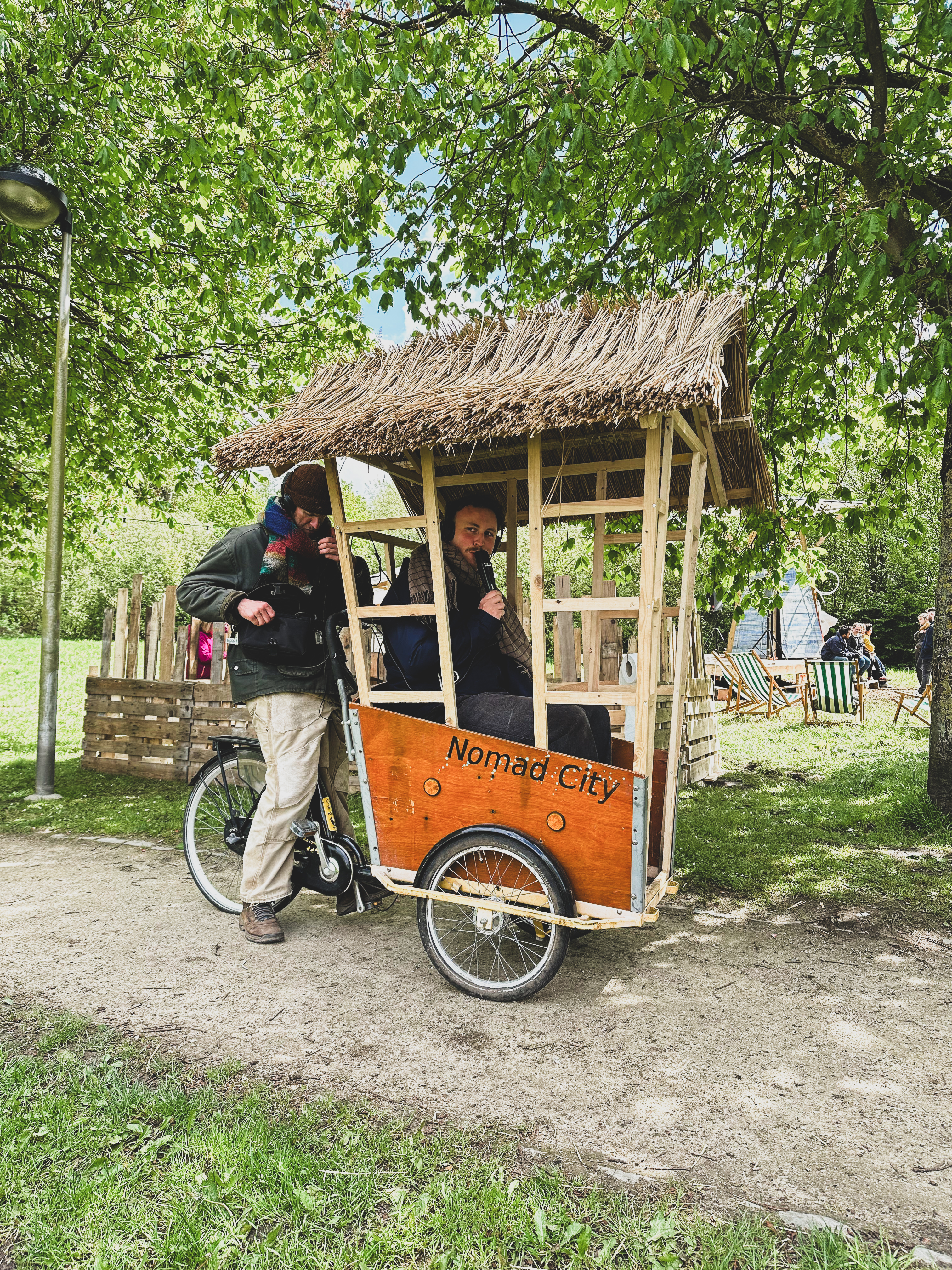
De Compodcast
There are many prejudices around composttoilets. With this project I wanted to explore them by giving bystanders an intimate experience in which they could share them in a playfull way. I build an open compost toilet structure and invited people to take place inside. Here they recieve a microphone and headphone which is connected to my own microphone and headphone. We then start our tour around the city while I ask to question them about compost toilets. “How do you experience the concept of a compost toilet? Can you envision the death of the flushing toilet? What would encourage you to use one? What is your first memory using one?” I explore their insights on this topic, encouraging them to relieve themselves of their prejudices and leave the toilet booth with some new knowledge of this amazing, yet simple household structure.
There are many prejudices around composttoilets. With this project I wanted to explore them by giving bystanders an intimate experience in which they could share them in a playfull way. I build an open compost toilet structure and invited people to take place inside. Here they recieve a microphone and headphone which is connected to my own microphone and headphone. We then start our tour around the city while I ask to question them about compost toilets. “How do you experience the concept of a compost toilet? Can you envision the death of the flushing toilet? What would encourage you to use one? What is your first memory using one?” I explore their insights on this topic, encouraging them to relieve themselves of their prejudices and leave the toilet booth with some new knowledge of this amazing, yet simple household structure.

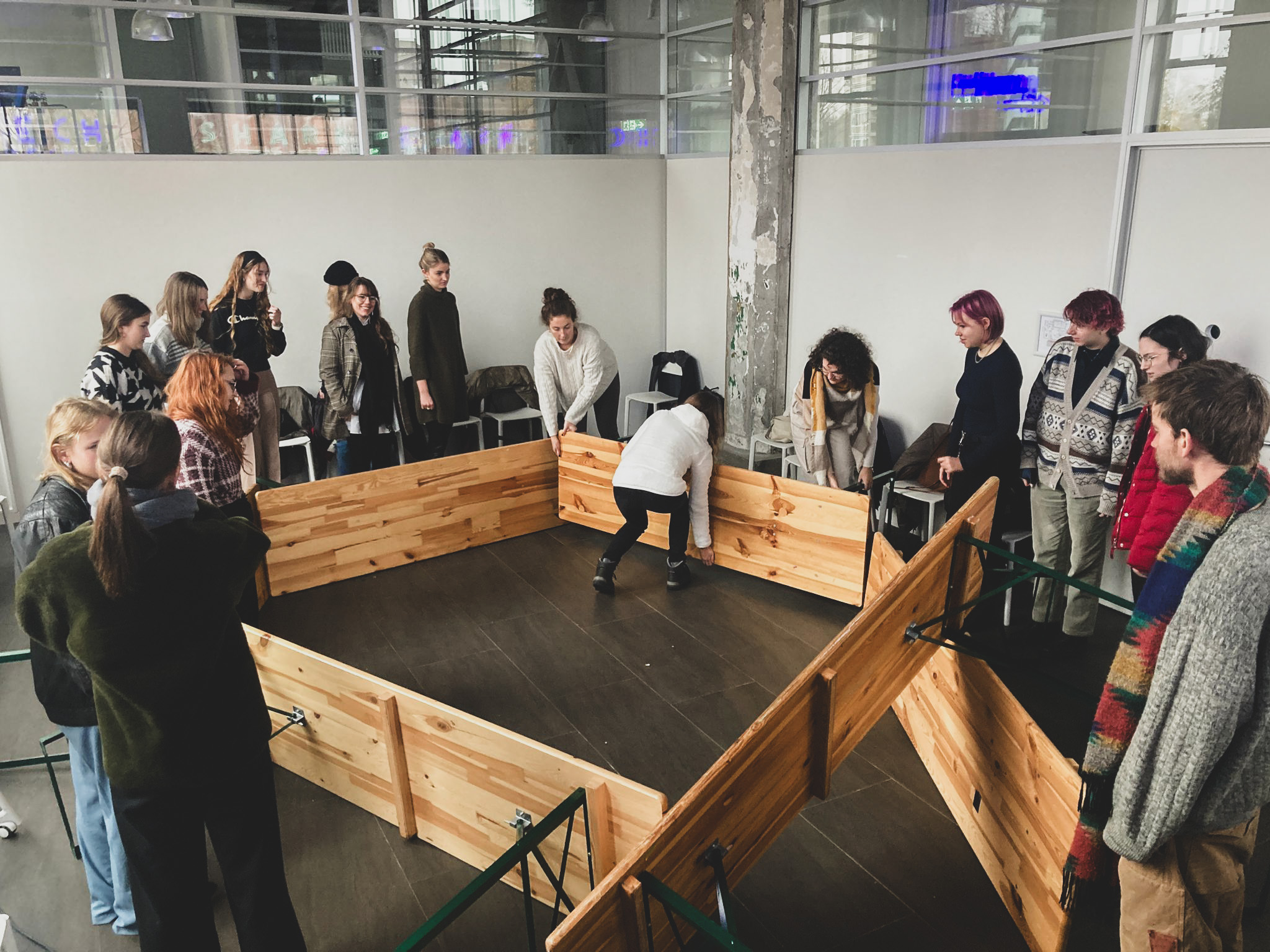
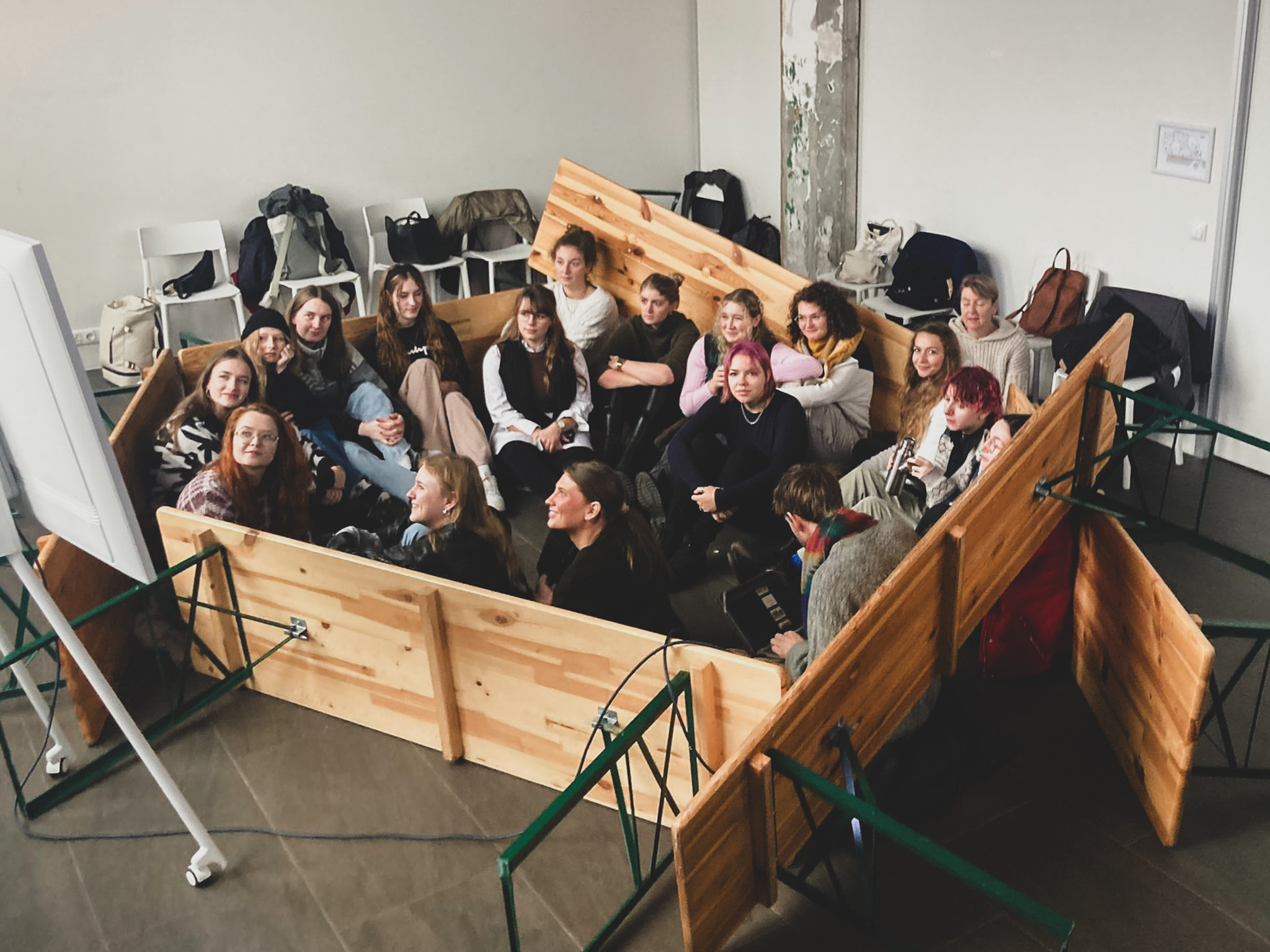
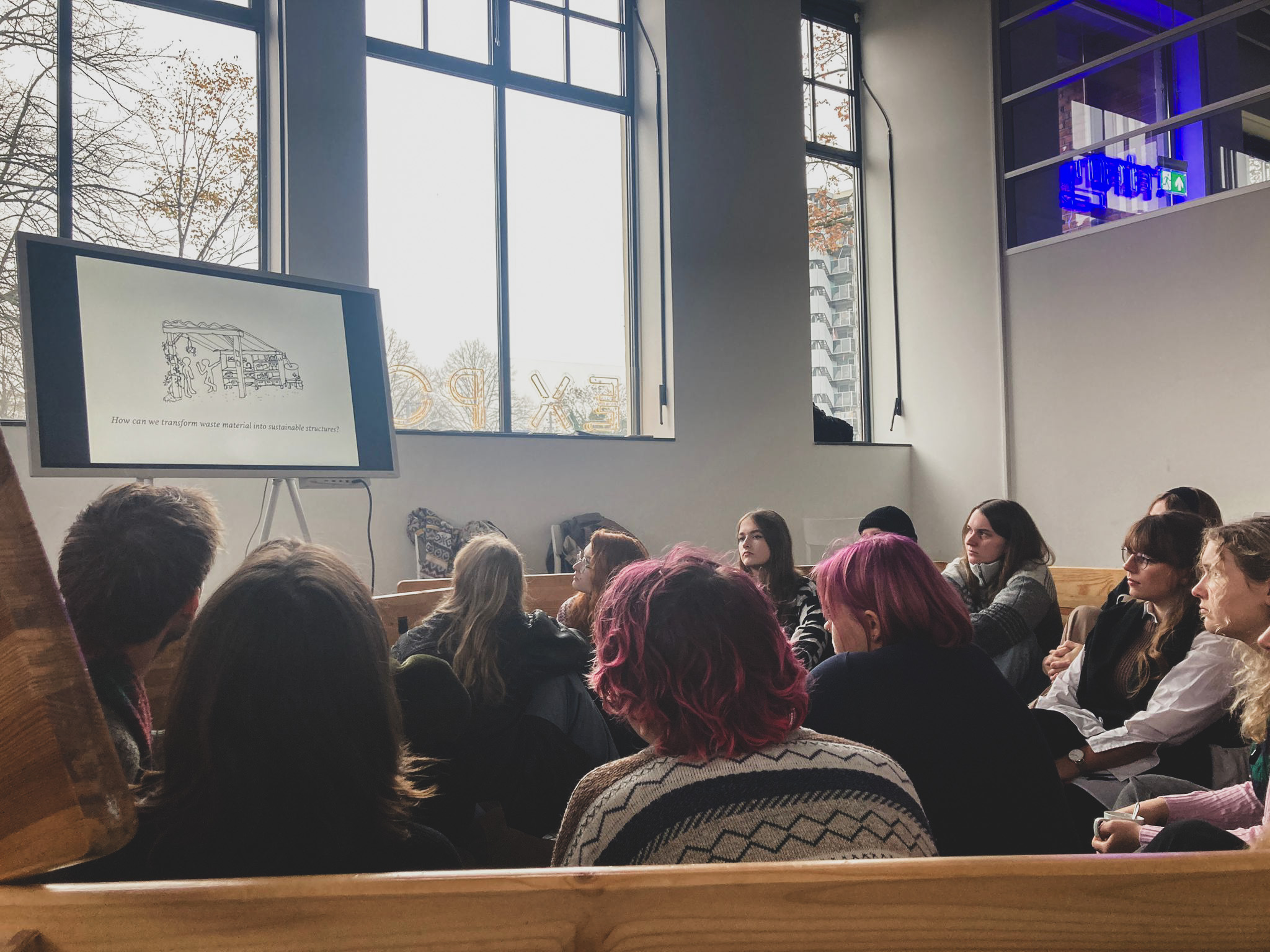

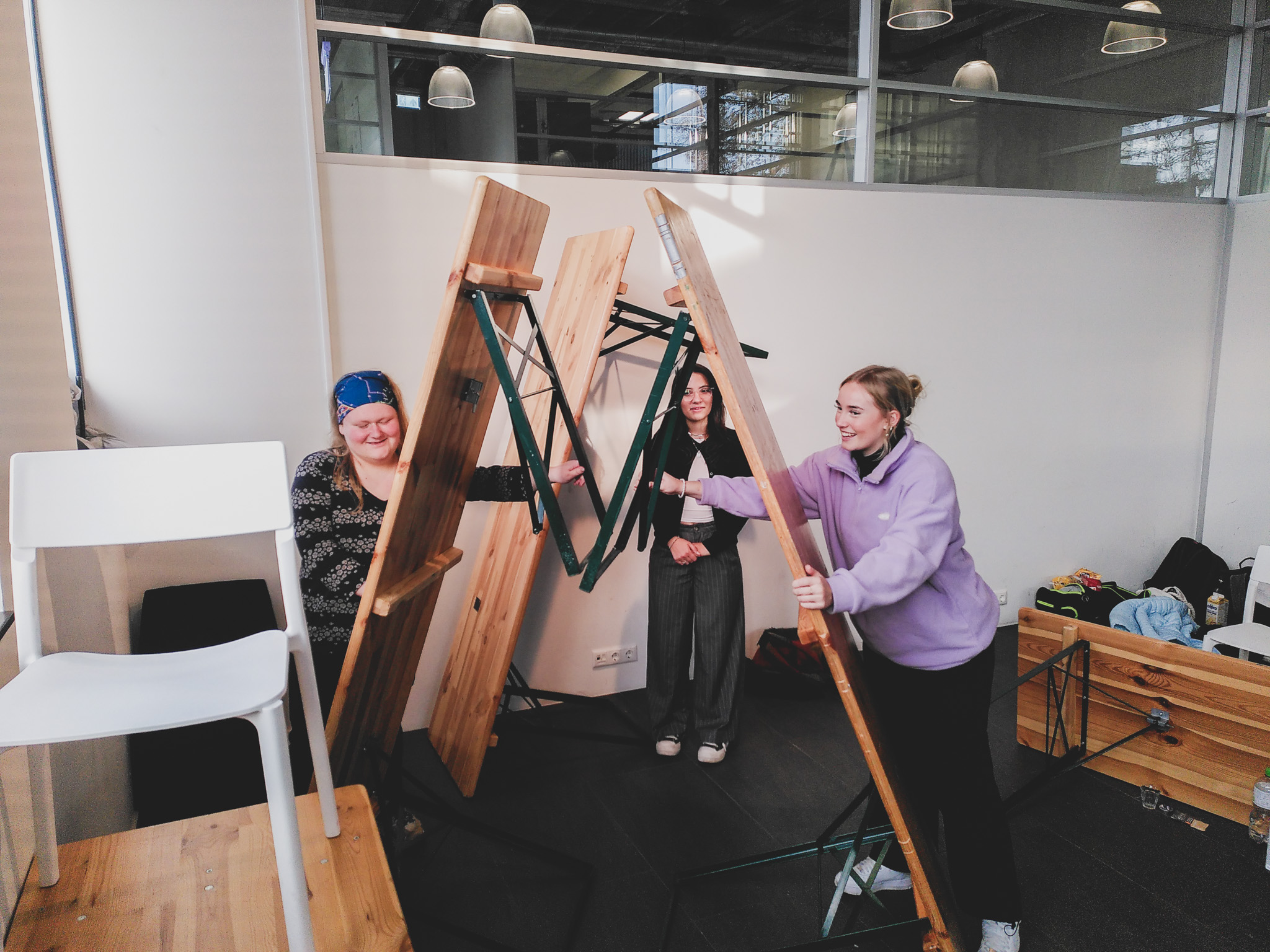
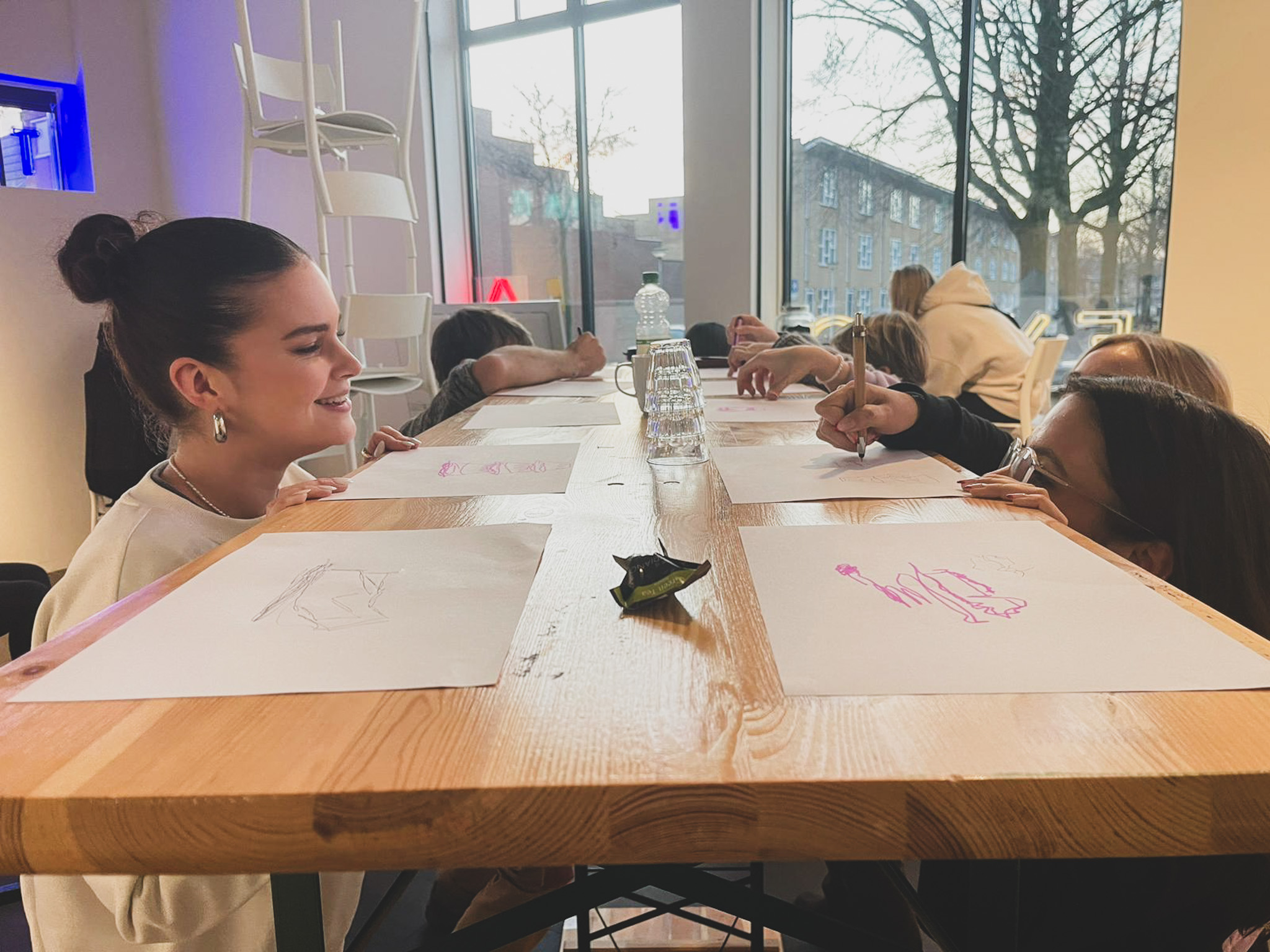
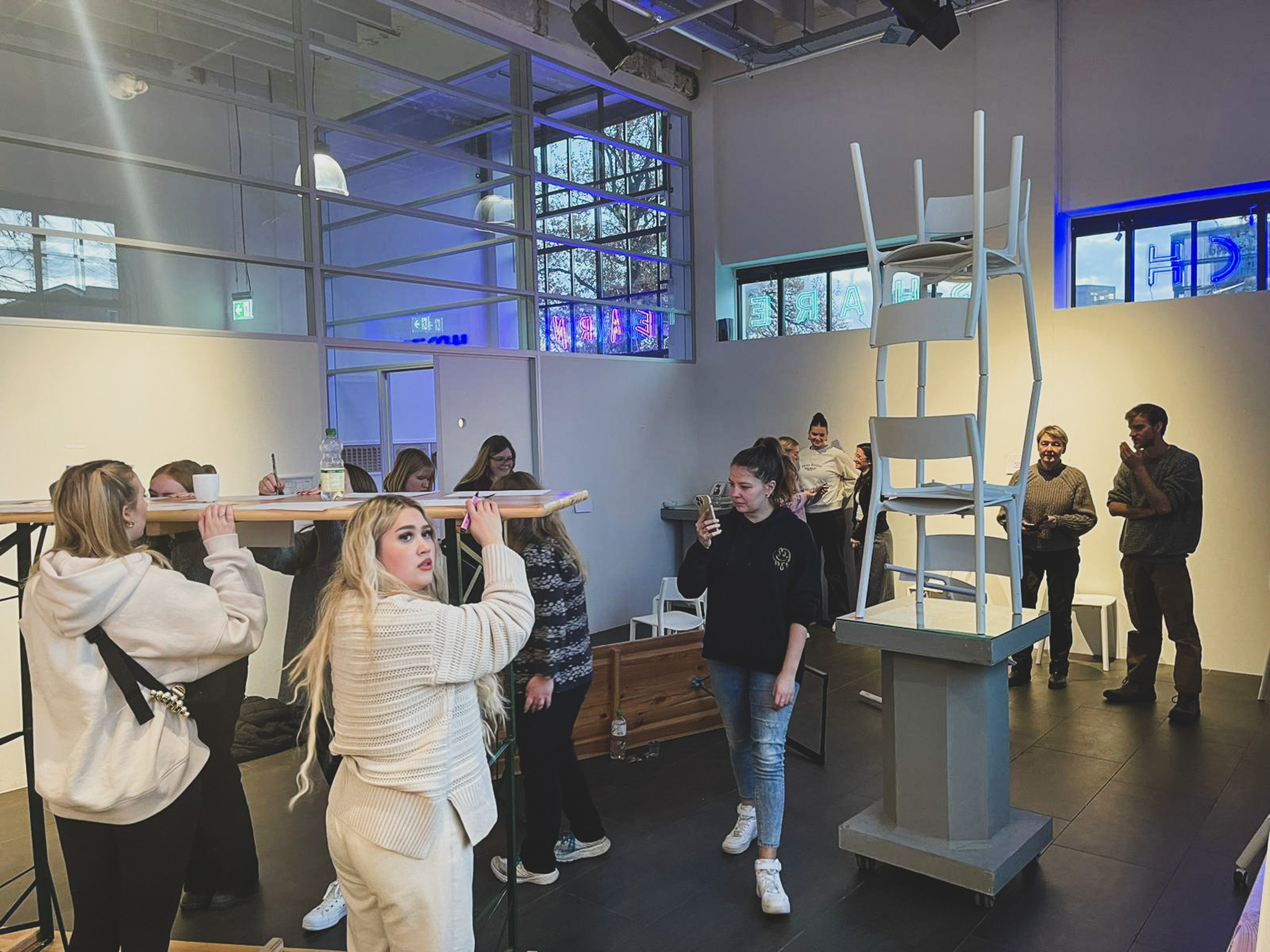
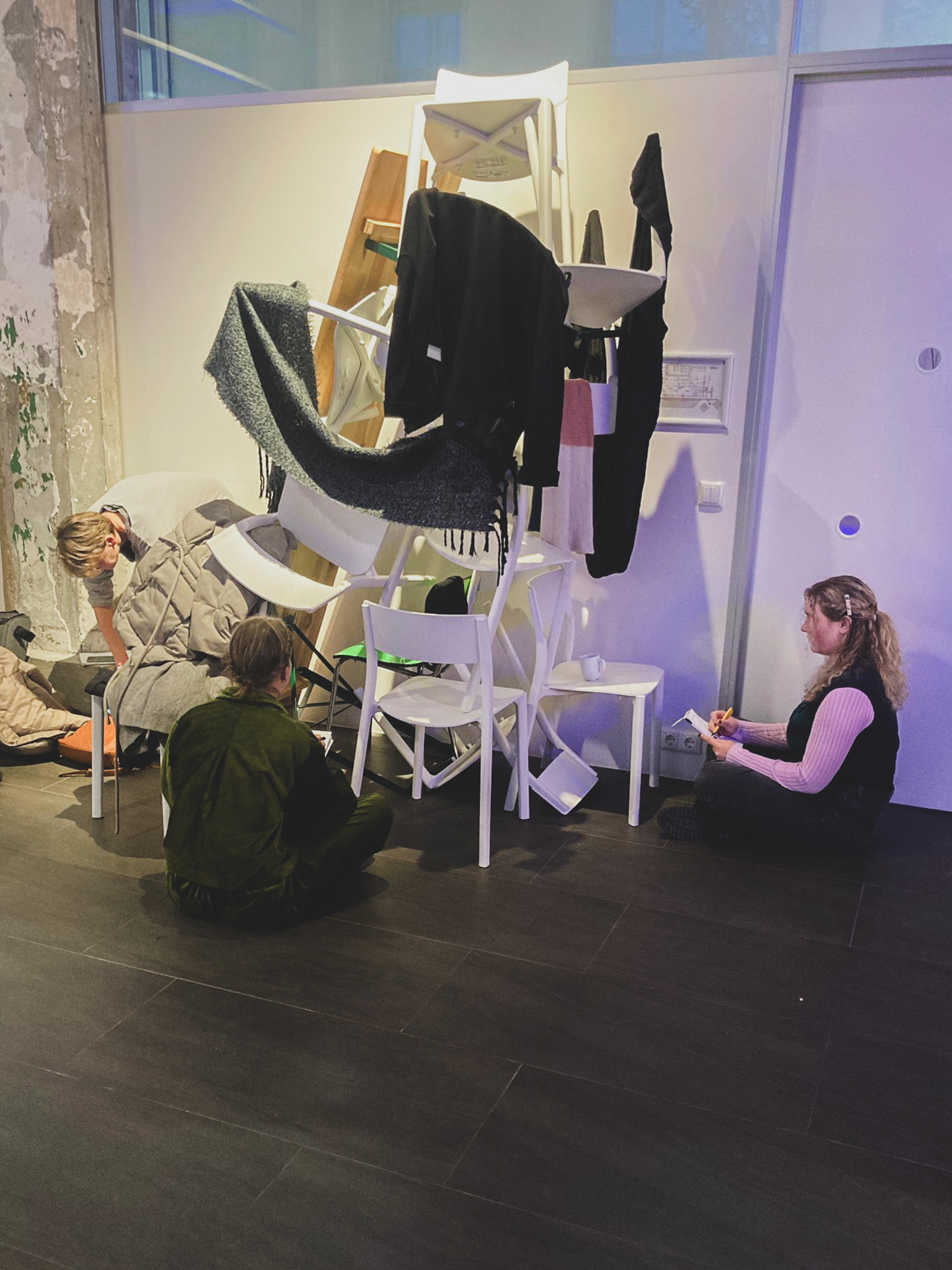


De-Schooling Objects , workshop, 2023
Within this workshop the participants are invited to question the traditional educational system by engaging with the often overlooked objects within classrooms. Some tables are being stacked in an attempt to disrupt the school hierarchy, while others are used to rethink the educational metronome that dictates the rhythm of learning. At the same time, two chairs intertwine, resulting in a tool that enables two participants to perceive the world through the eyes of collaboration. These concrete interventions serve as both tools and metaphors for reshaping the learning environment and breaking free from traditional constraints. What can we learn from this unconventional collaboration? How might this non-traditional approach initiate creativity, critical thinking, and a deeper understanding of the learning process?
Are you interested in this workshop?
Send a mail to lemmens_stef@hotmail.com
Within this workshop the participants are invited to question the traditional educational system by engaging with the often overlooked objects within classrooms. Some tables are being stacked in an attempt to disrupt the school hierarchy, while others are used to rethink the educational metronome that dictates the rhythm of learning. At the same time, two chairs intertwine, resulting in a tool that enables two participants to perceive the world through the eyes of collaboration. These concrete interventions serve as both tools and metaphors for reshaping the learning environment and breaking free from traditional constraints. What can we learn from this unconventional collaboration? How might this non-traditional approach initiate creativity, critical thinking, and a deeper understanding of the learning process?
Are you interested in this workshop?
Send a mail to lemmens_stef@hotmail.com
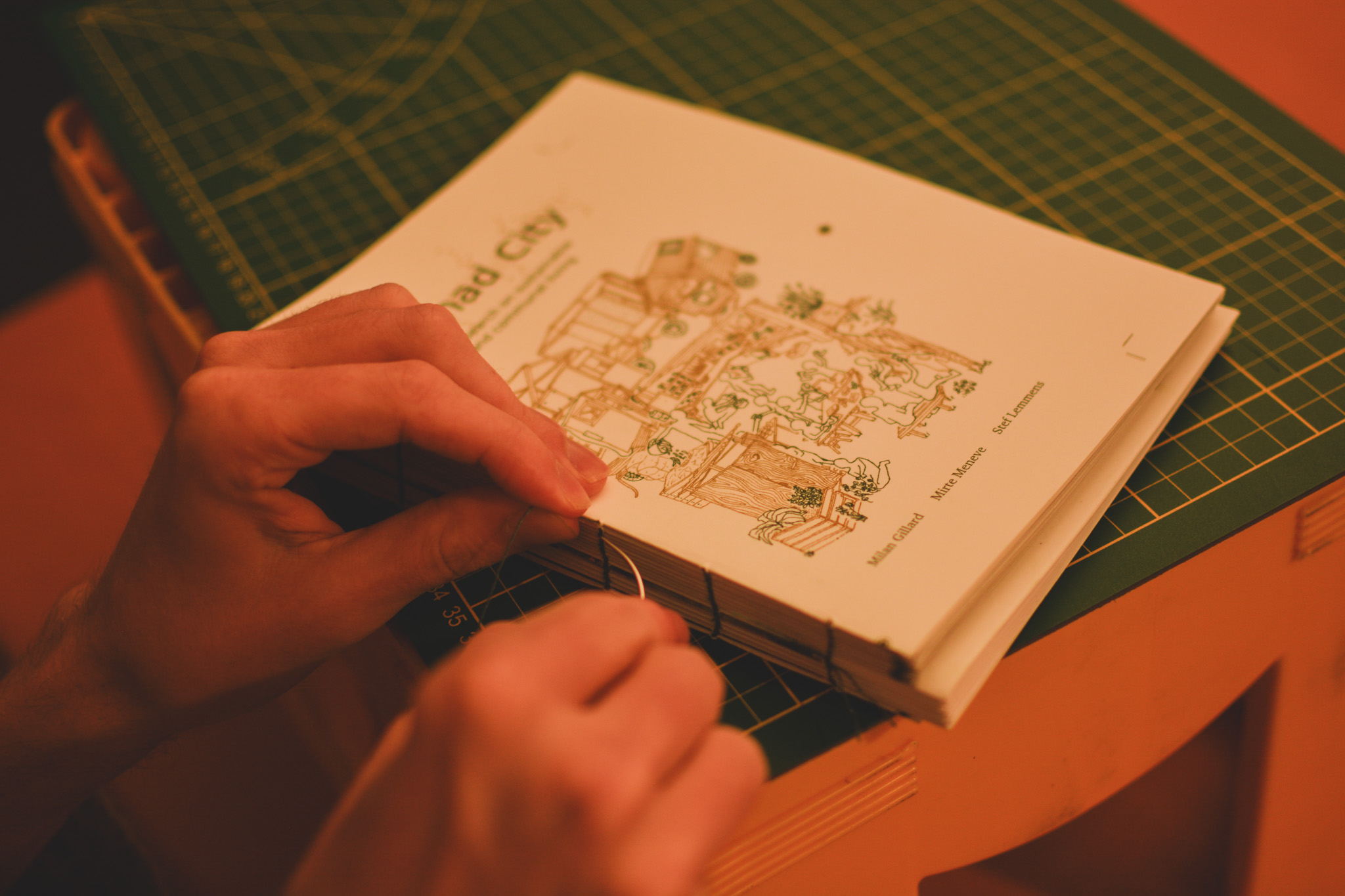
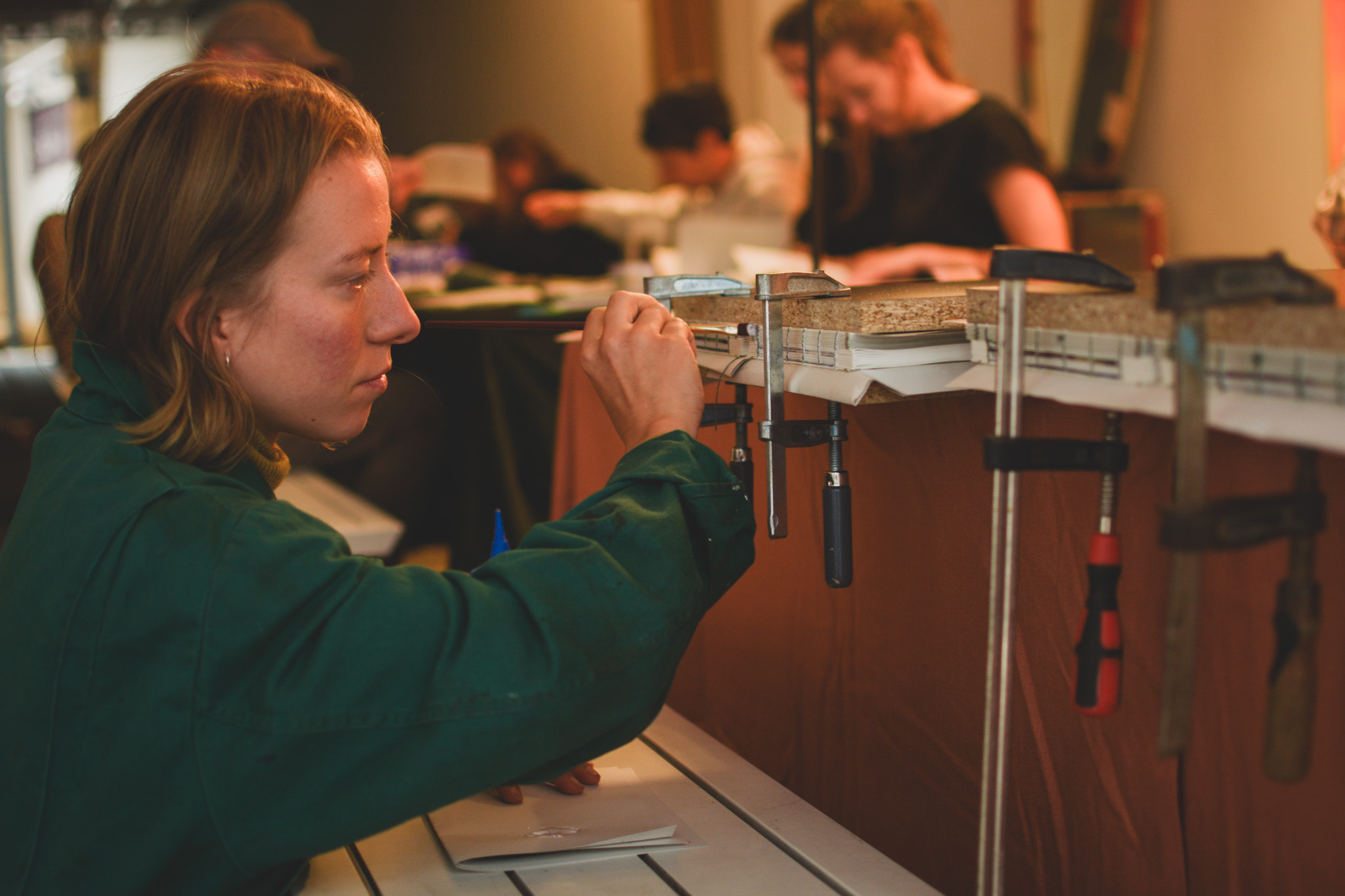
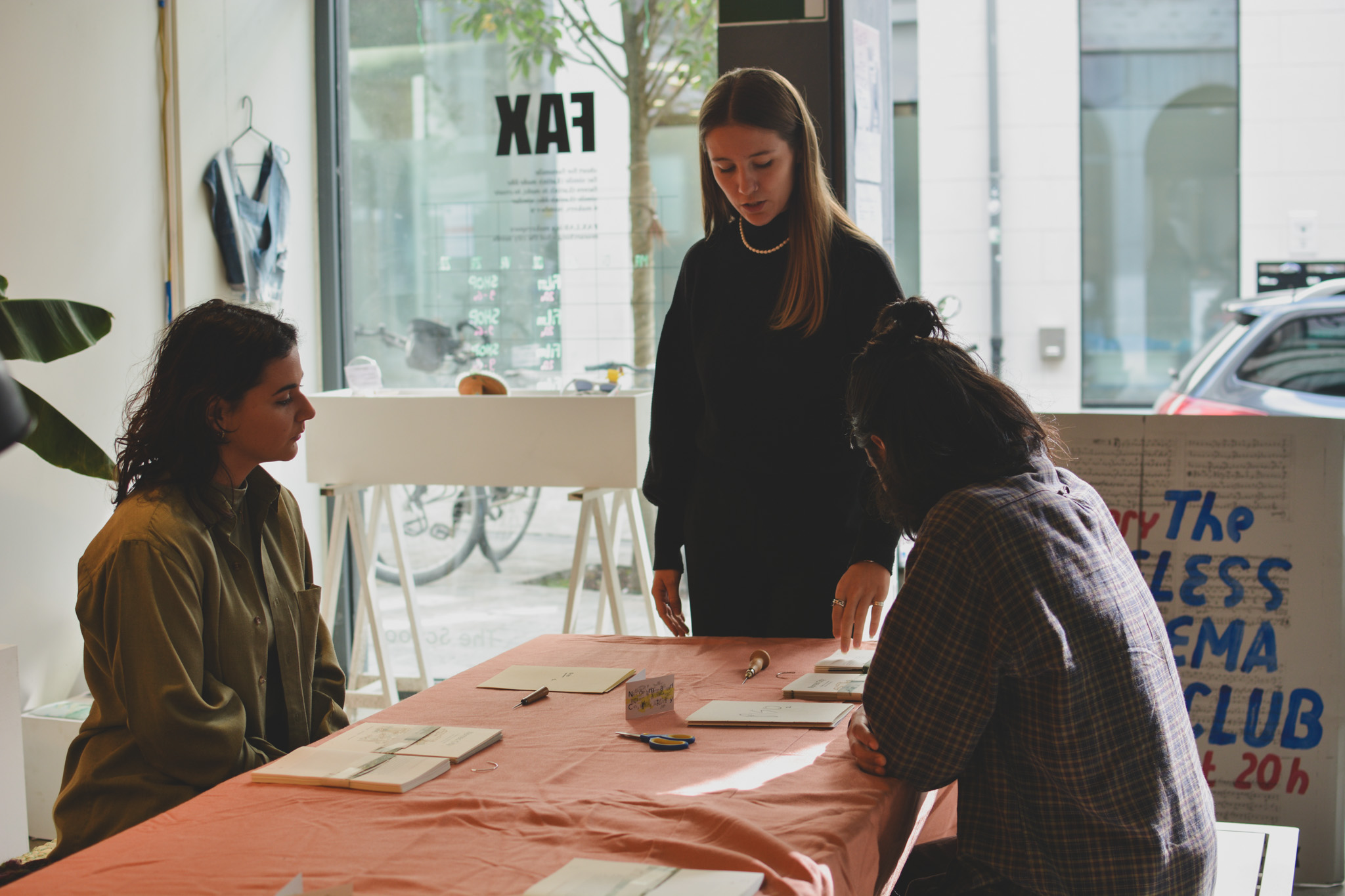

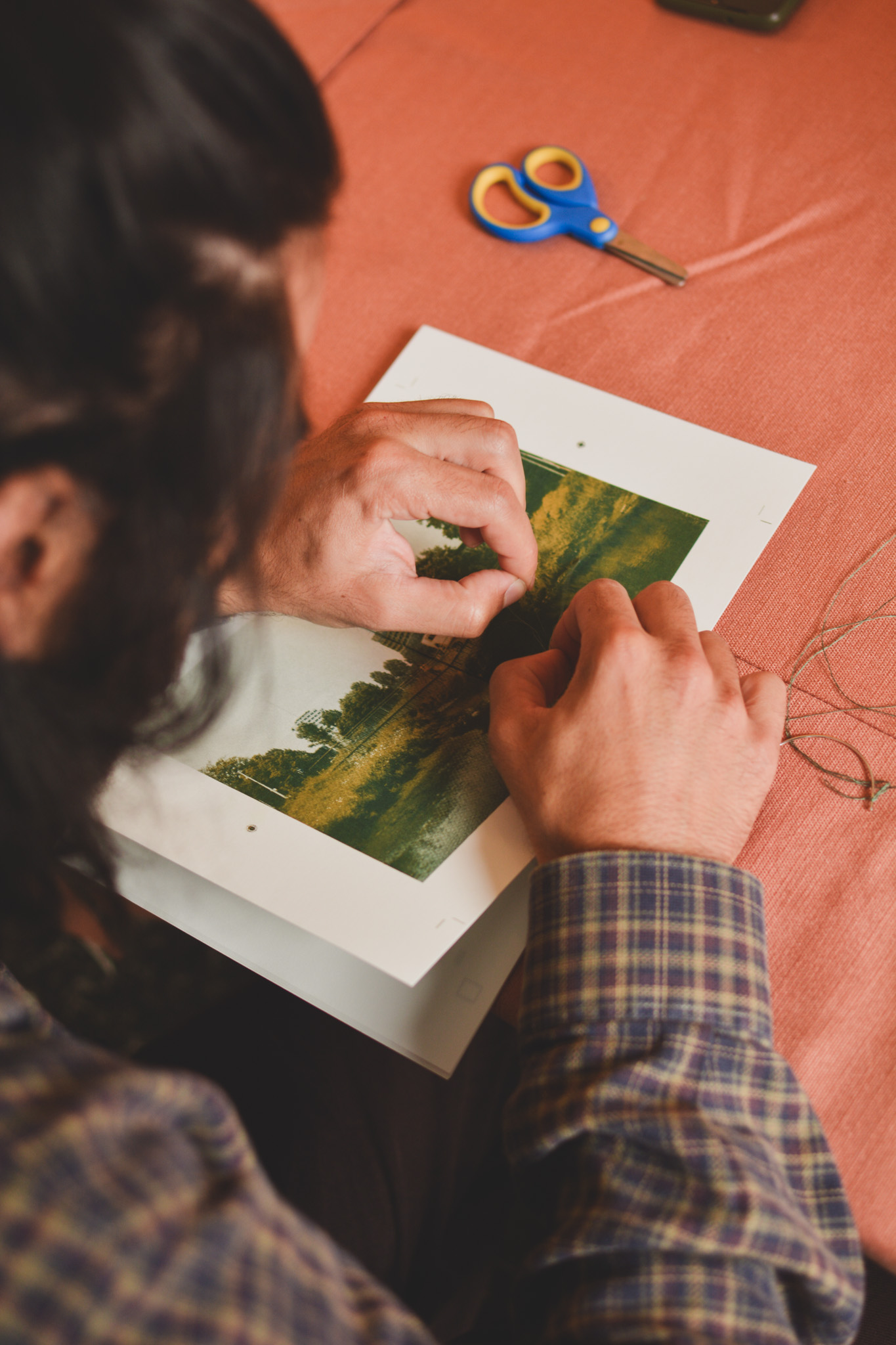

Nomad City, publication, 2023
In a world marked by an array of social and ecological challenges, the Nomad City project emerged as an inspiring response to these issues. Follow the journey of Milan Gillard, Mirte Meneve and Stef Lemmens as they embark on a transformative project in the heart of a city.
Over nine months, they created a nomadic village that moved between two unused plots of land in the city of Hasselt, Belgium. Within this unique setting, they invited artists, designers, architects, and permaculturists to join them in this research on life. Together they designed structures for communal living, reimagined education as a hands-on experience, highlighted our dependency from the natural environment and built bridges between schools, its departments and the neighborhoods surrounding them.
This book stands as a testament to their remarkable journey—a story that not only inspires but also equips you with practical insights, invaluable lessons, and tangible tools. Let it spark your own project and serve as a roadmap to transform your dreams of sustainable and communal living into a vibrant reality.
Interested in this book? Click here
In a world marked by an array of social and ecological challenges, the Nomad City project emerged as an inspiring response to these issues. Follow the journey of Milan Gillard, Mirte Meneve and Stef Lemmens as they embark on a transformative project in the heart of a city.
Over nine months, they created a nomadic village that moved between two unused plots of land in the city of Hasselt, Belgium. Within this unique setting, they invited artists, designers, architects, and permaculturists to join them in this research on life. Together they designed structures for communal living, reimagined education as a hands-on experience, highlighted our dependency from the natural environment and built bridges between schools, its departments and the neighborhoods surrounding them.
This book stands as a testament to their remarkable journey—a story that not only inspires but also equips you with practical insights, invaluable lessons, and tangible tools. Let it spark your own project and serve as a roadmap to transform your dreams of sustainable and communal living into a vibrant reality.
Interested in this book? Click here

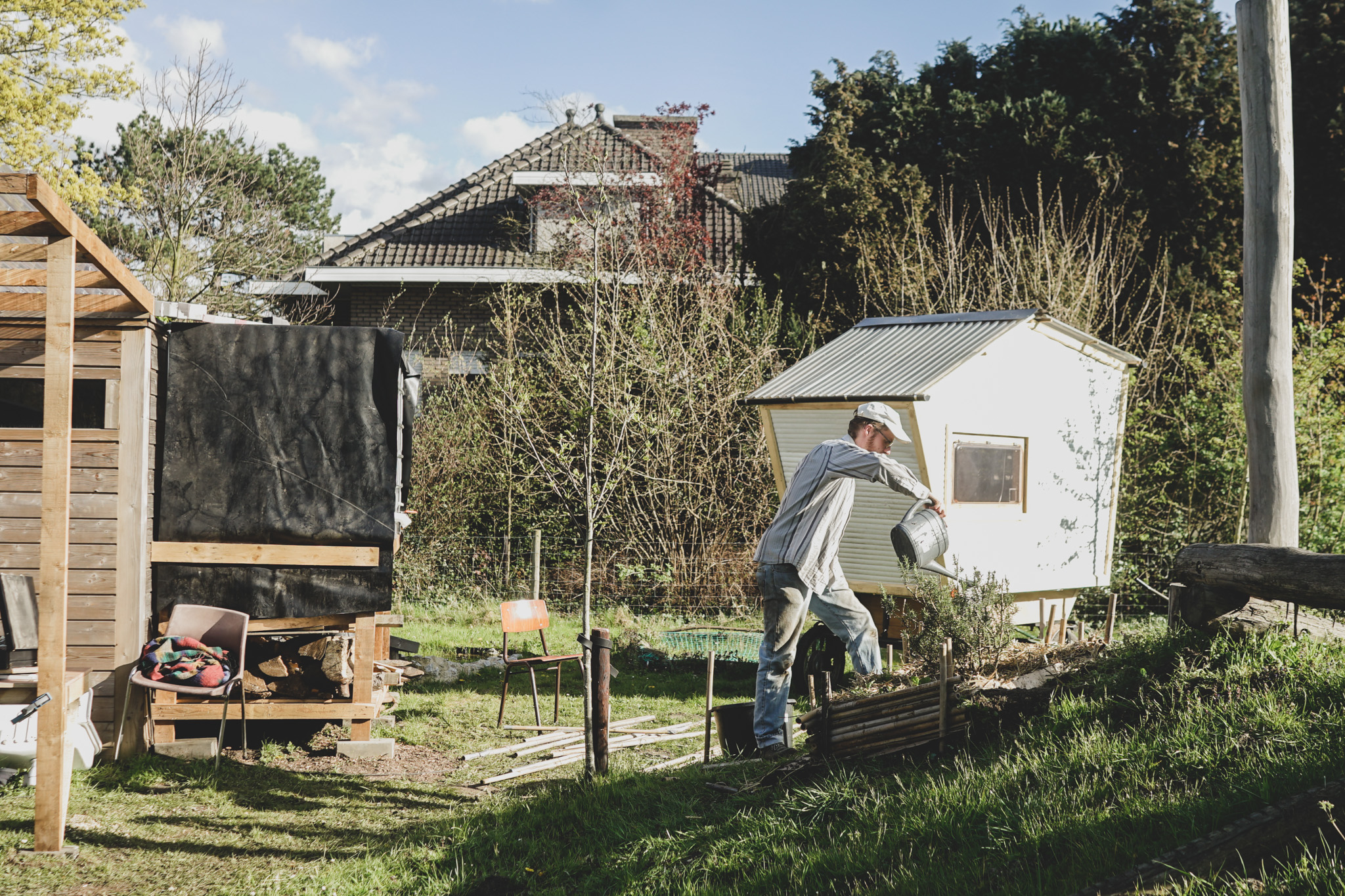
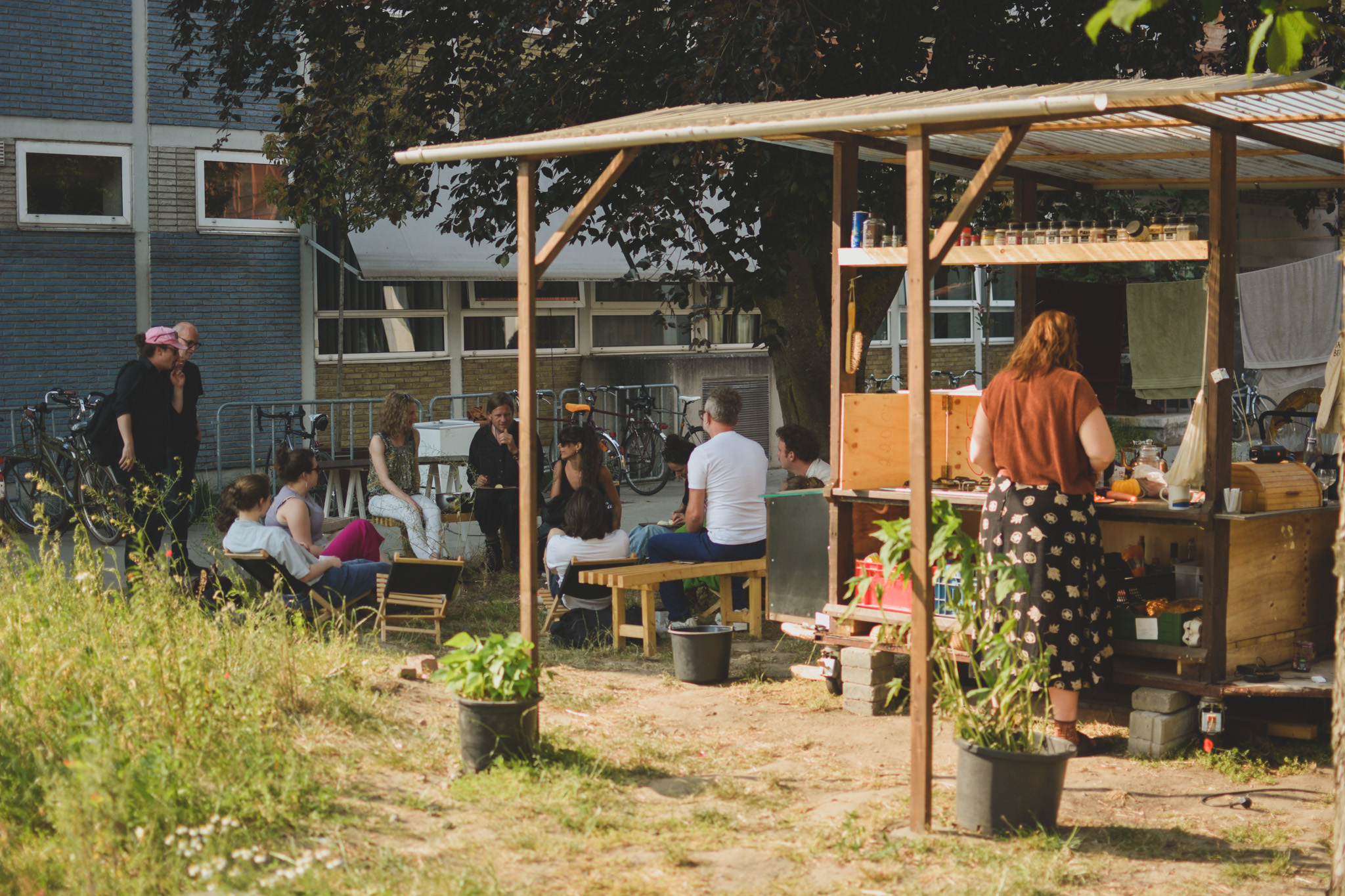

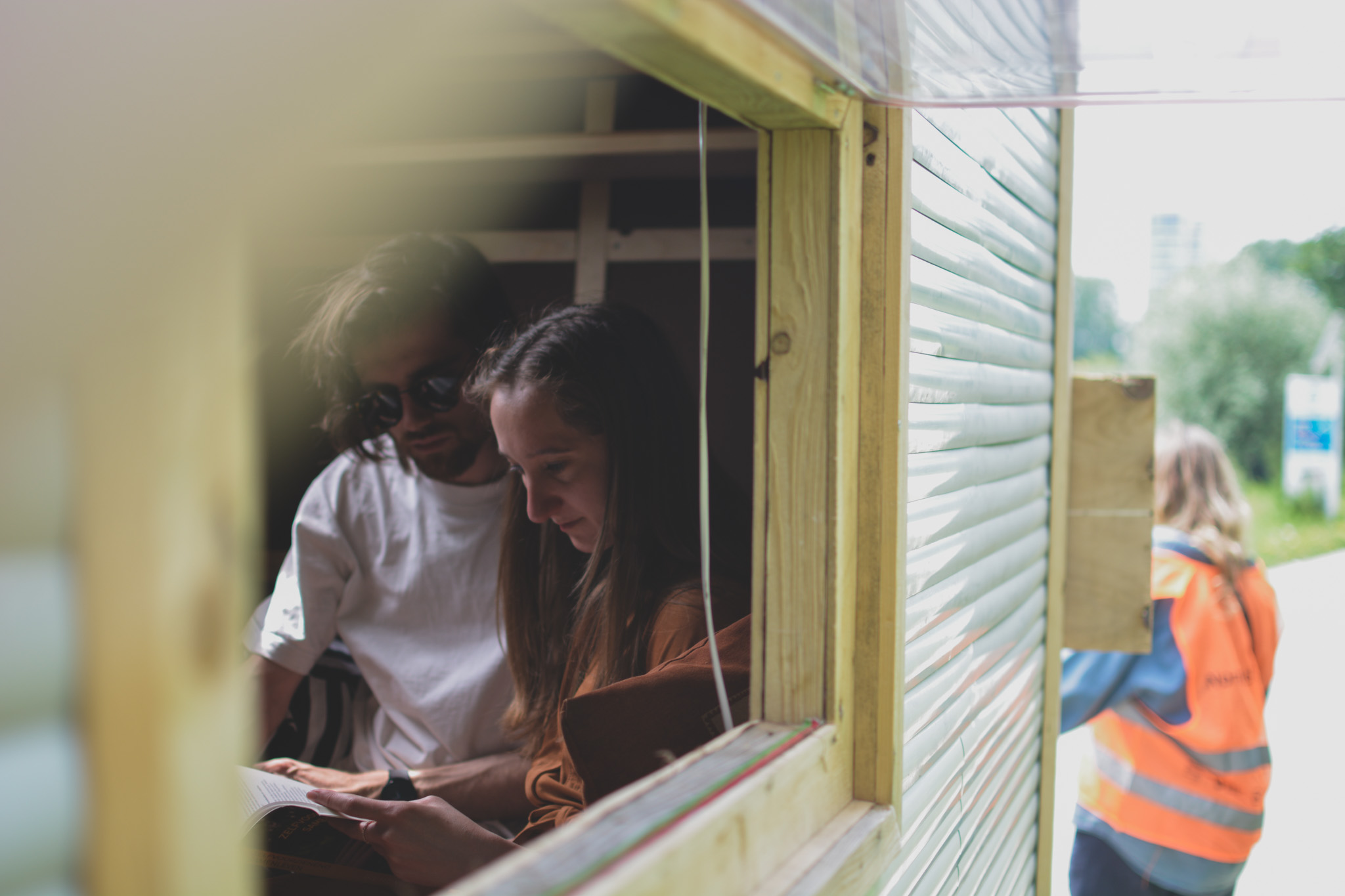
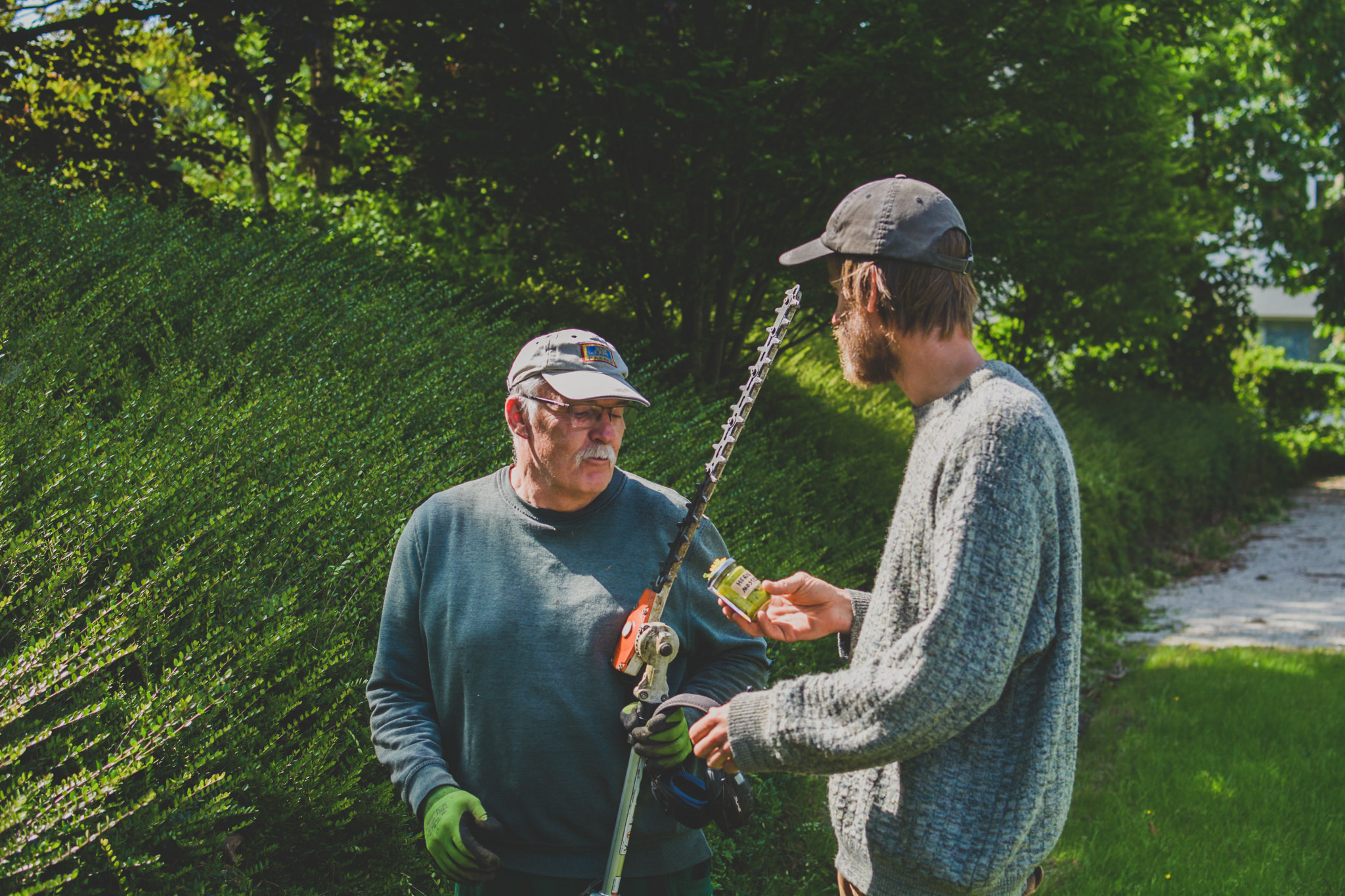
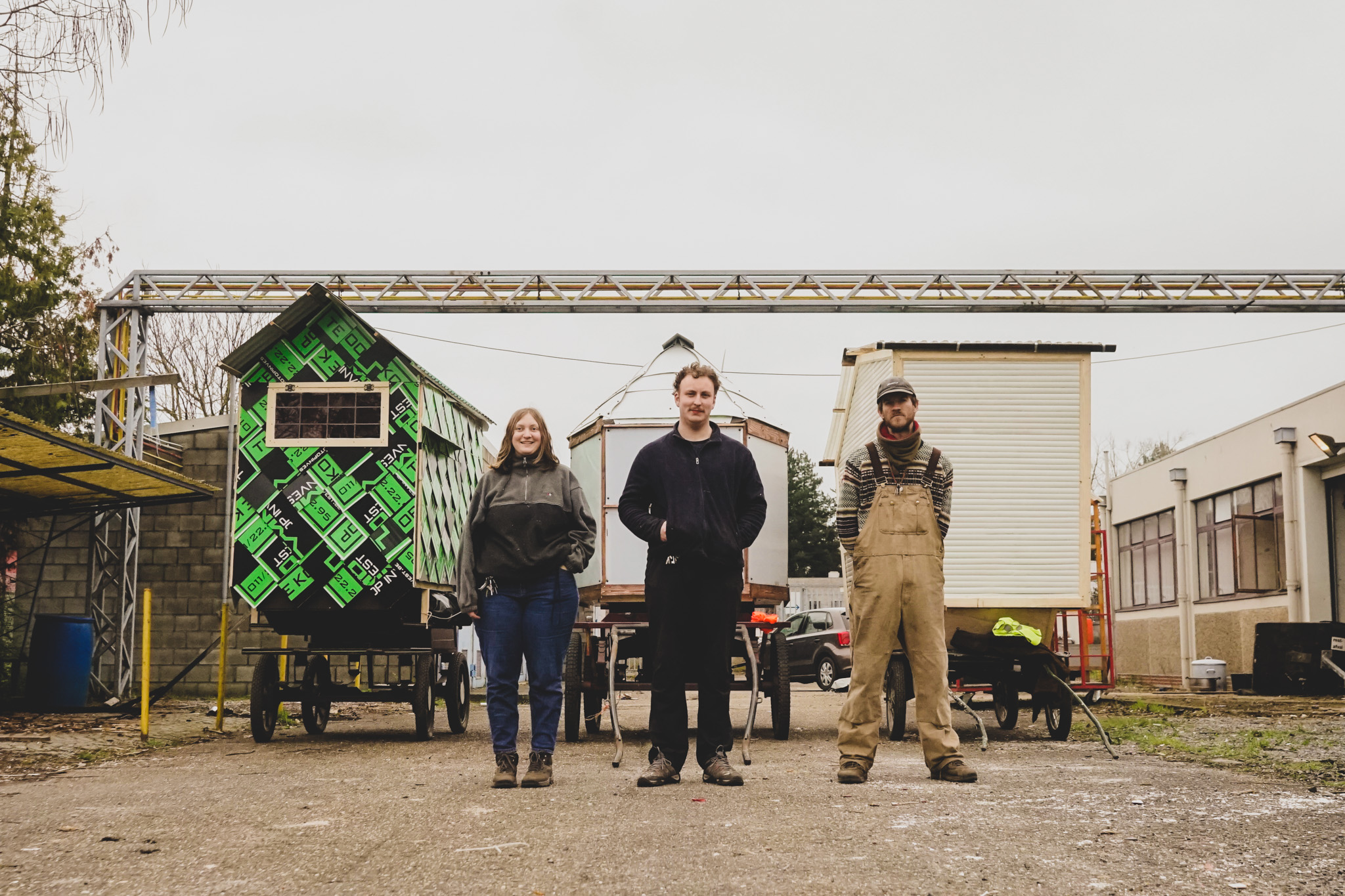
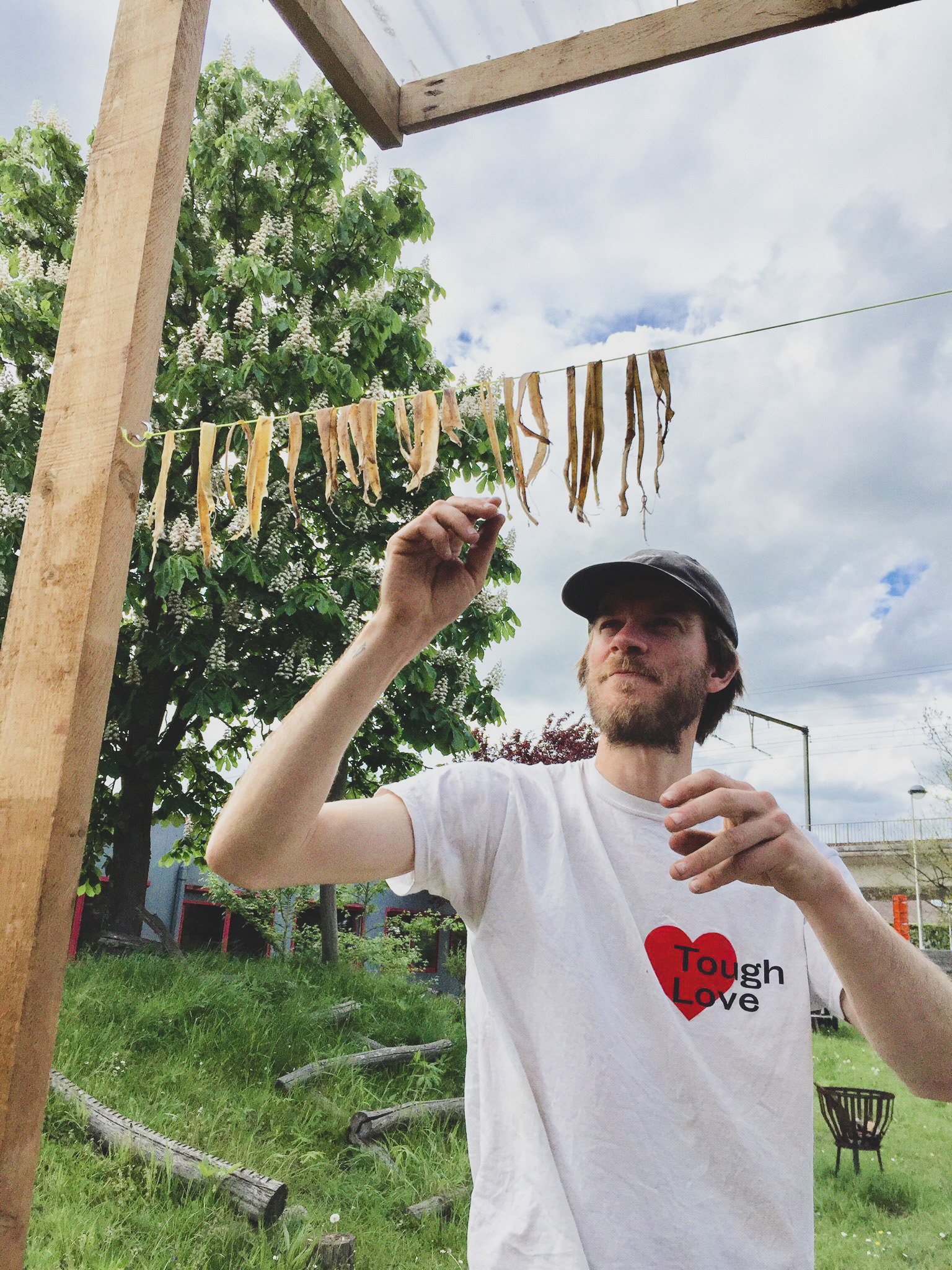


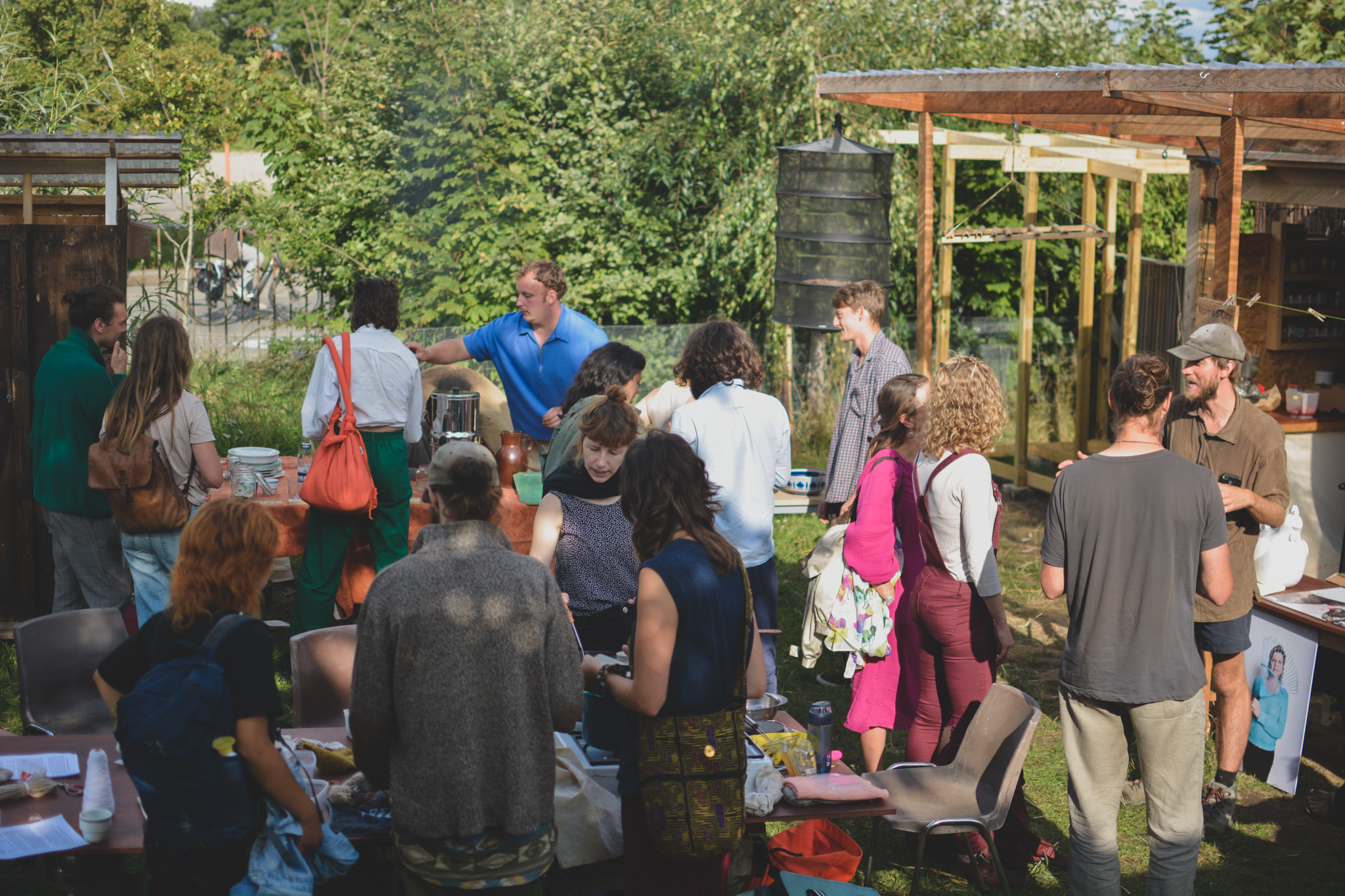
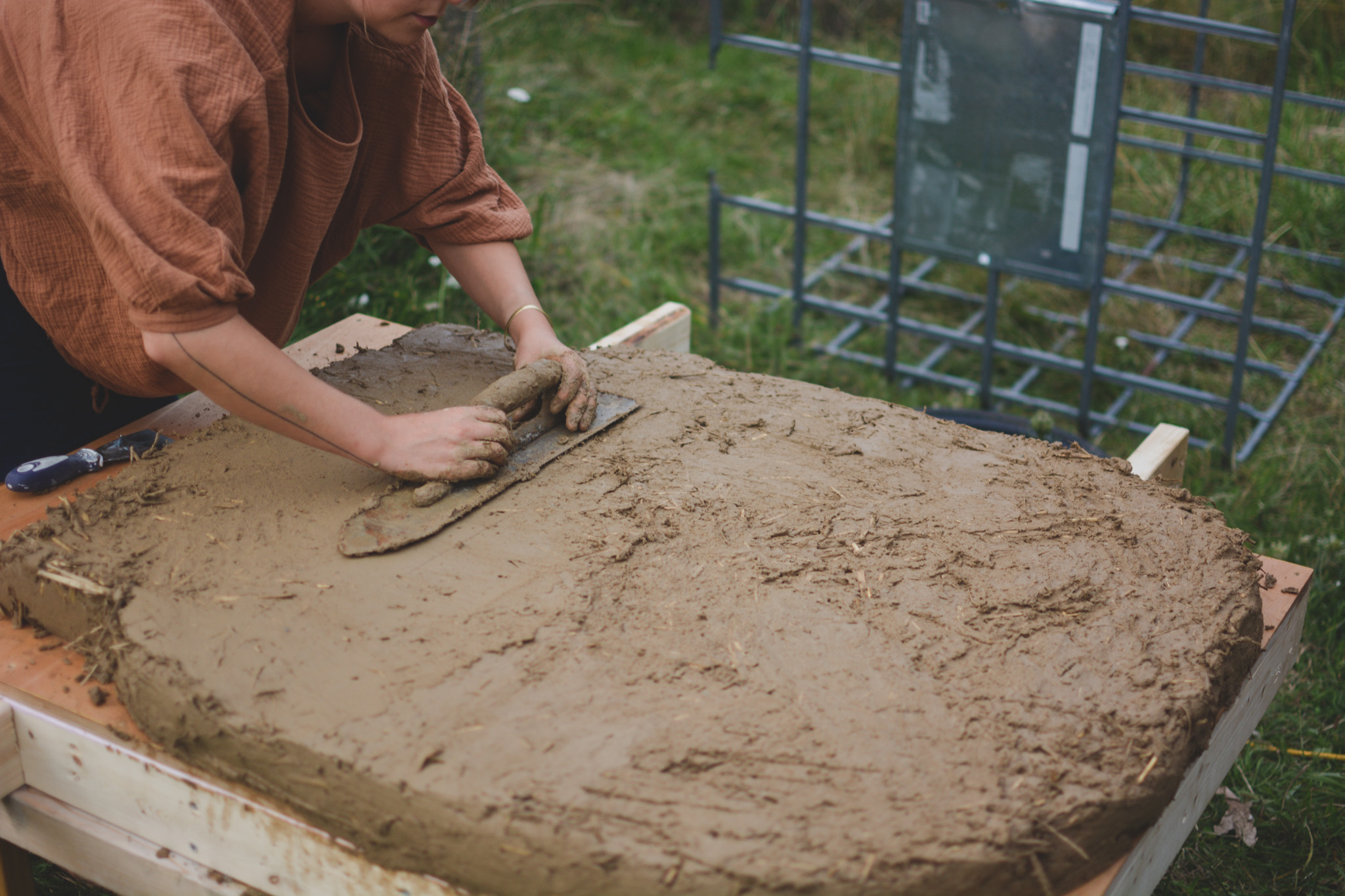
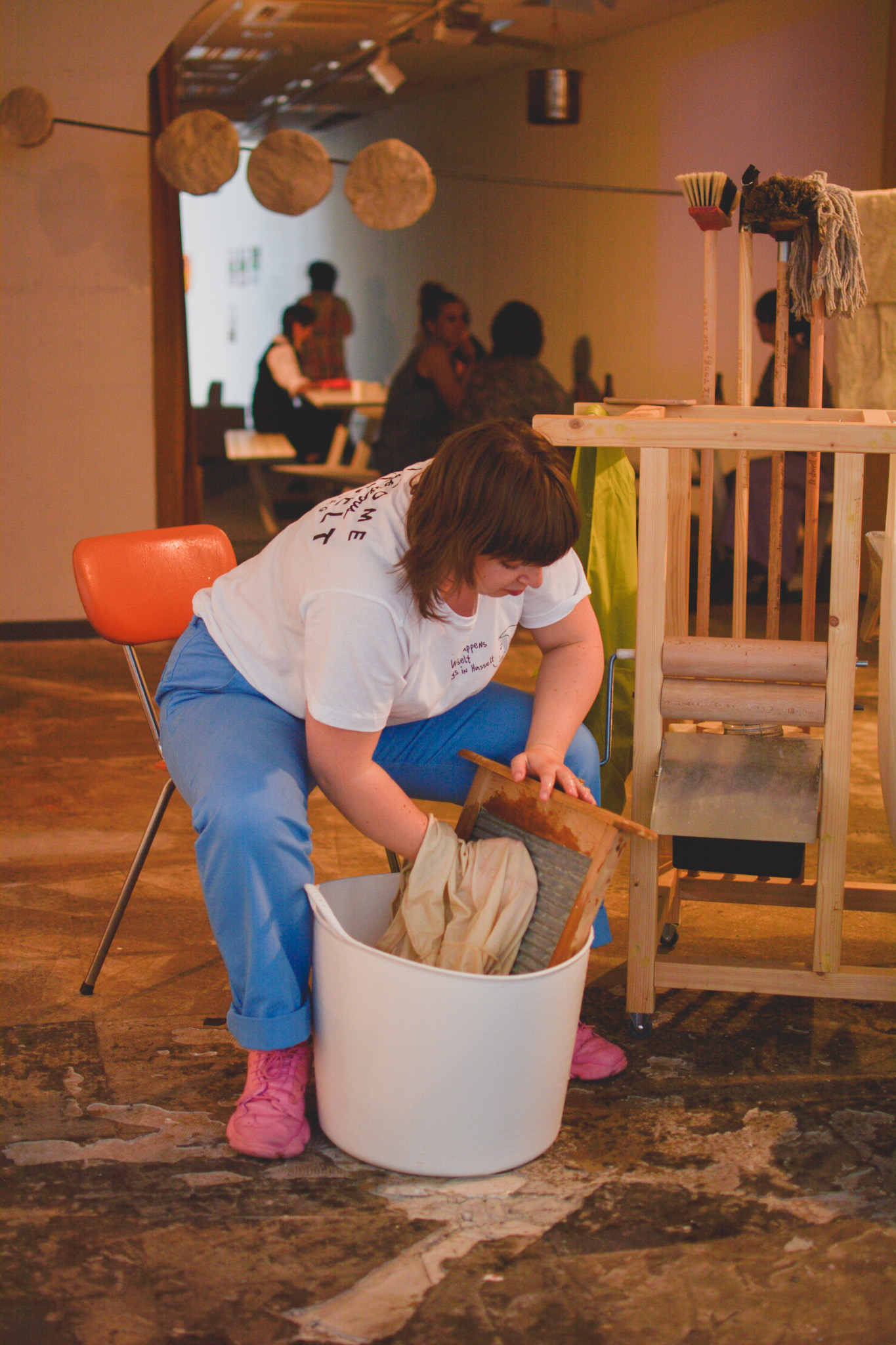
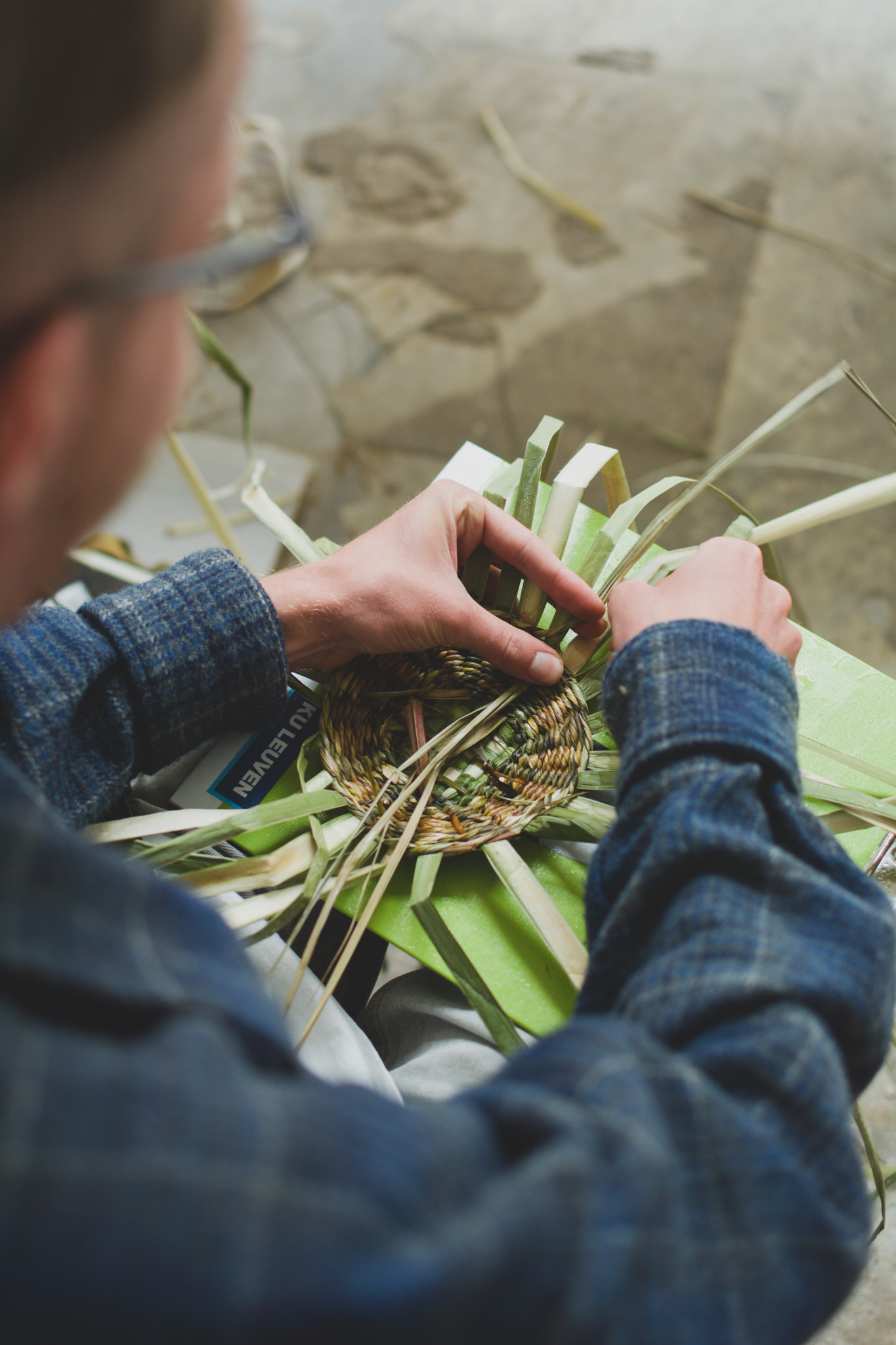

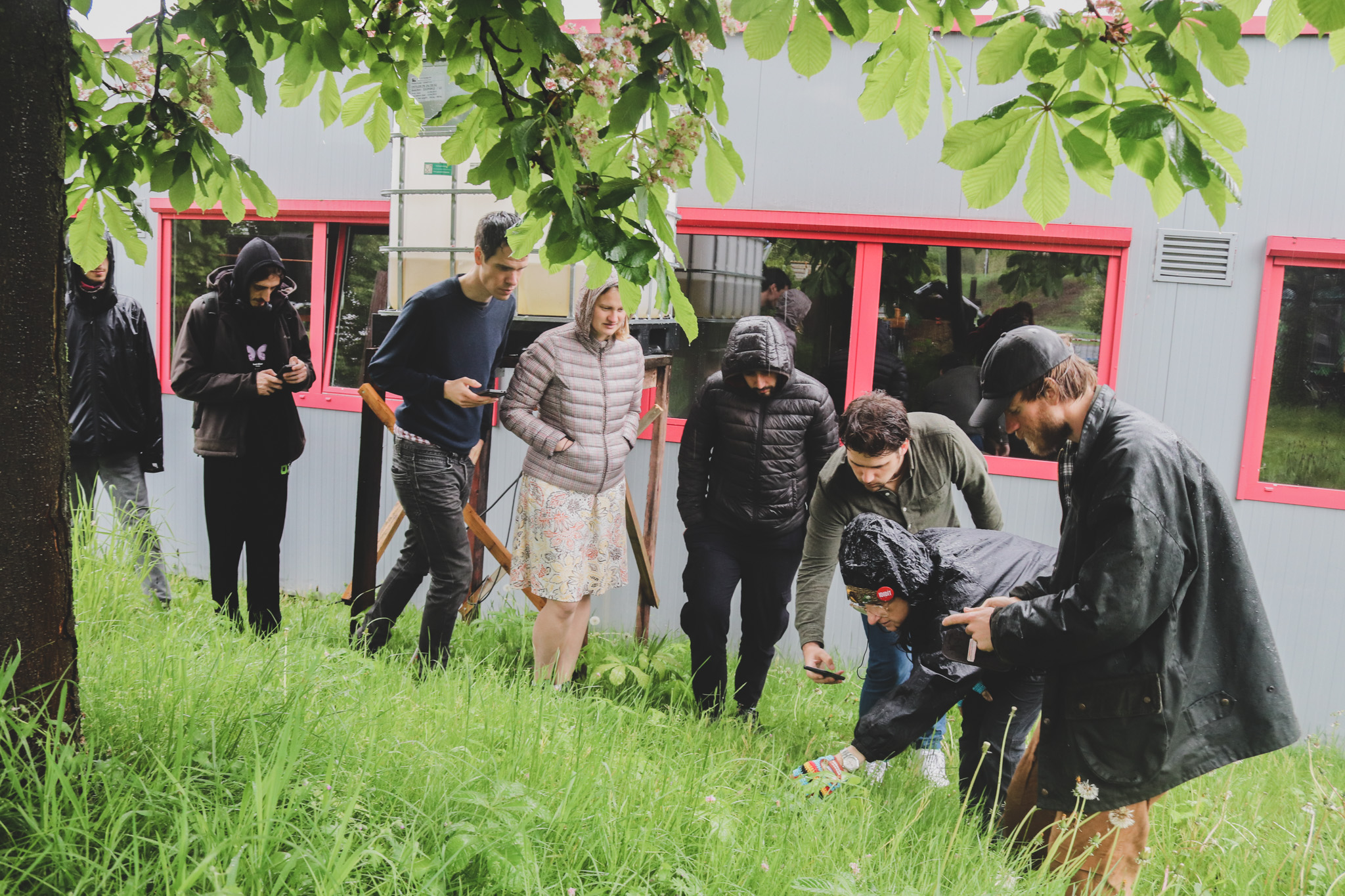
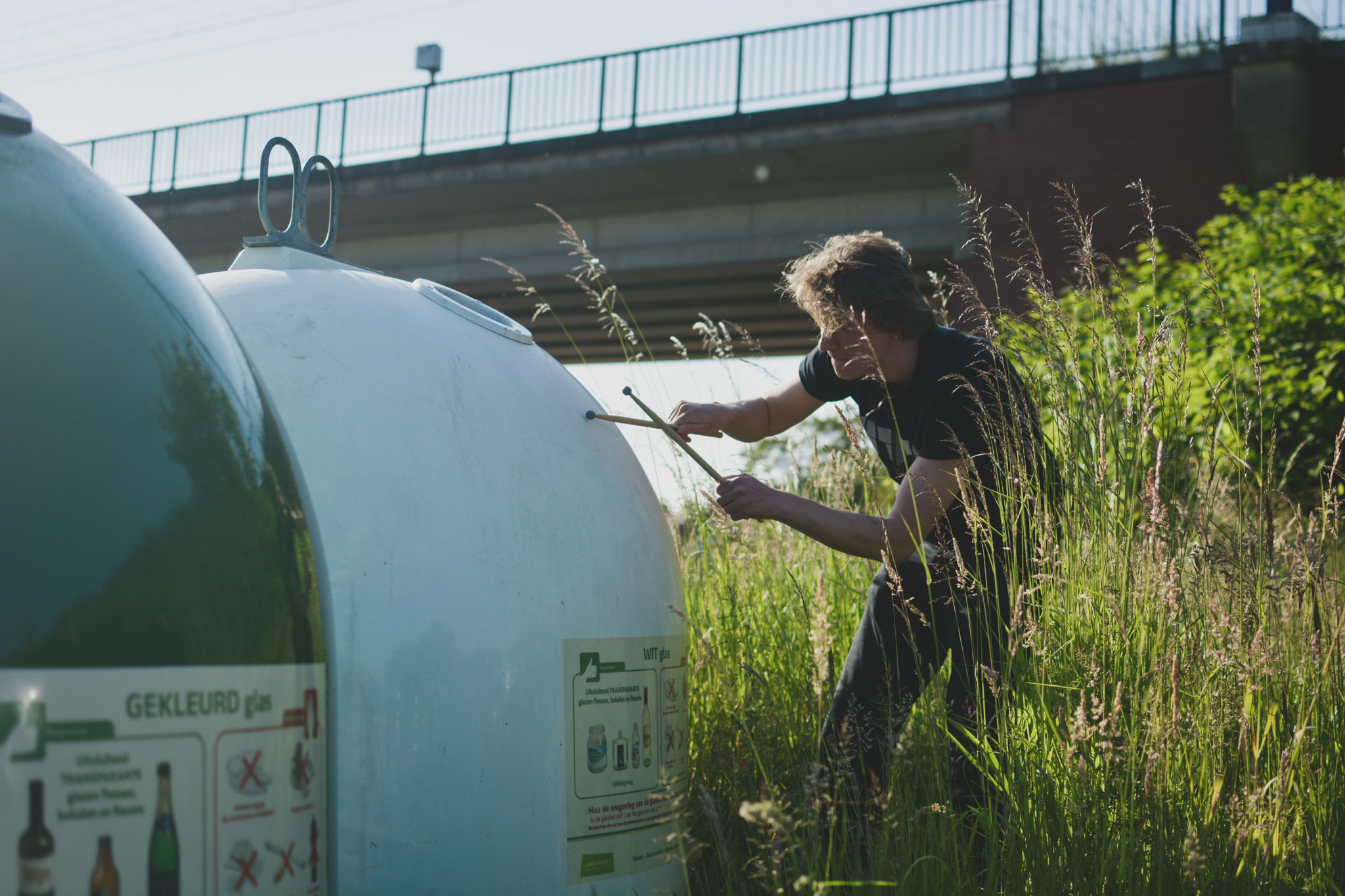
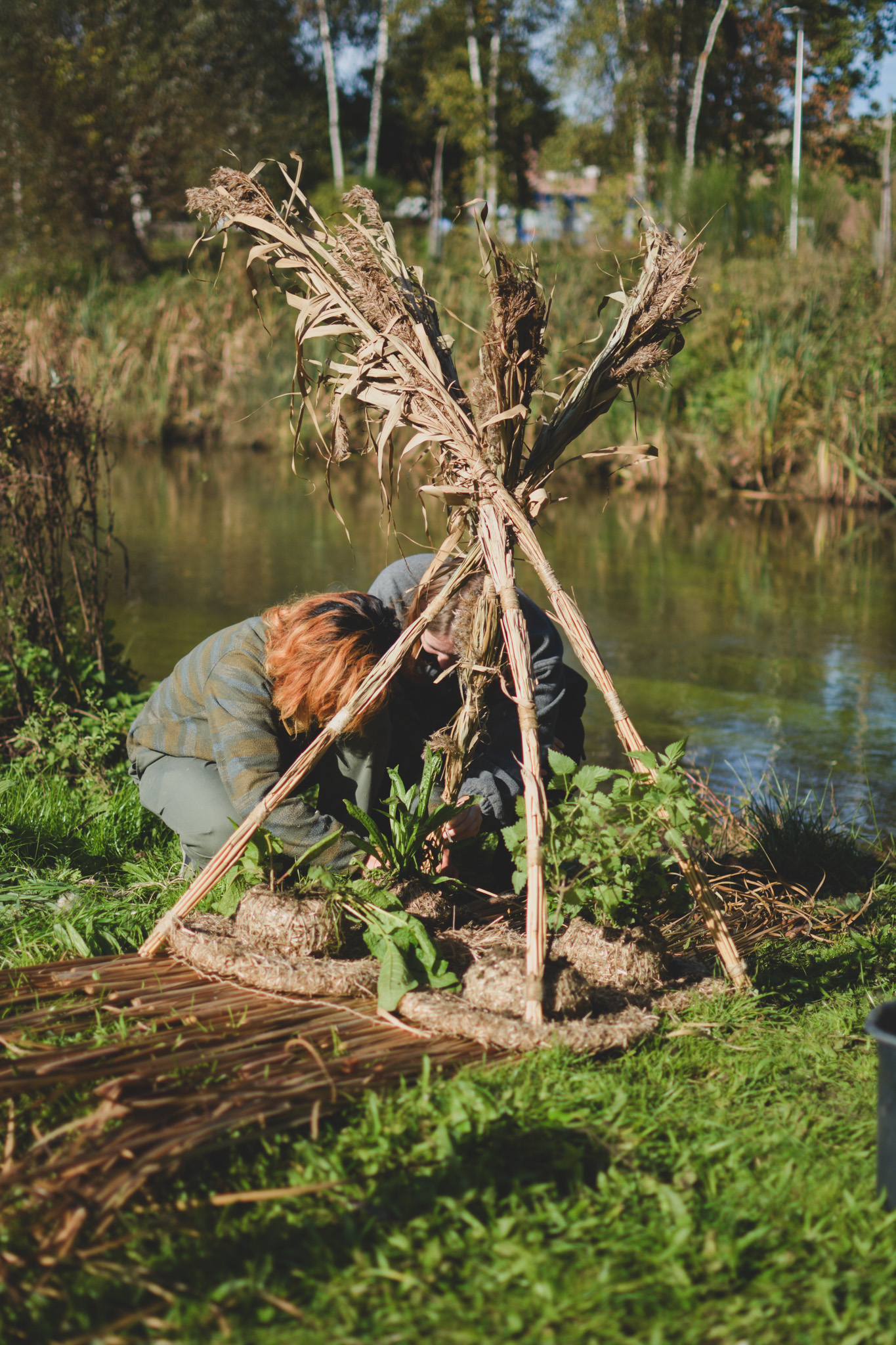
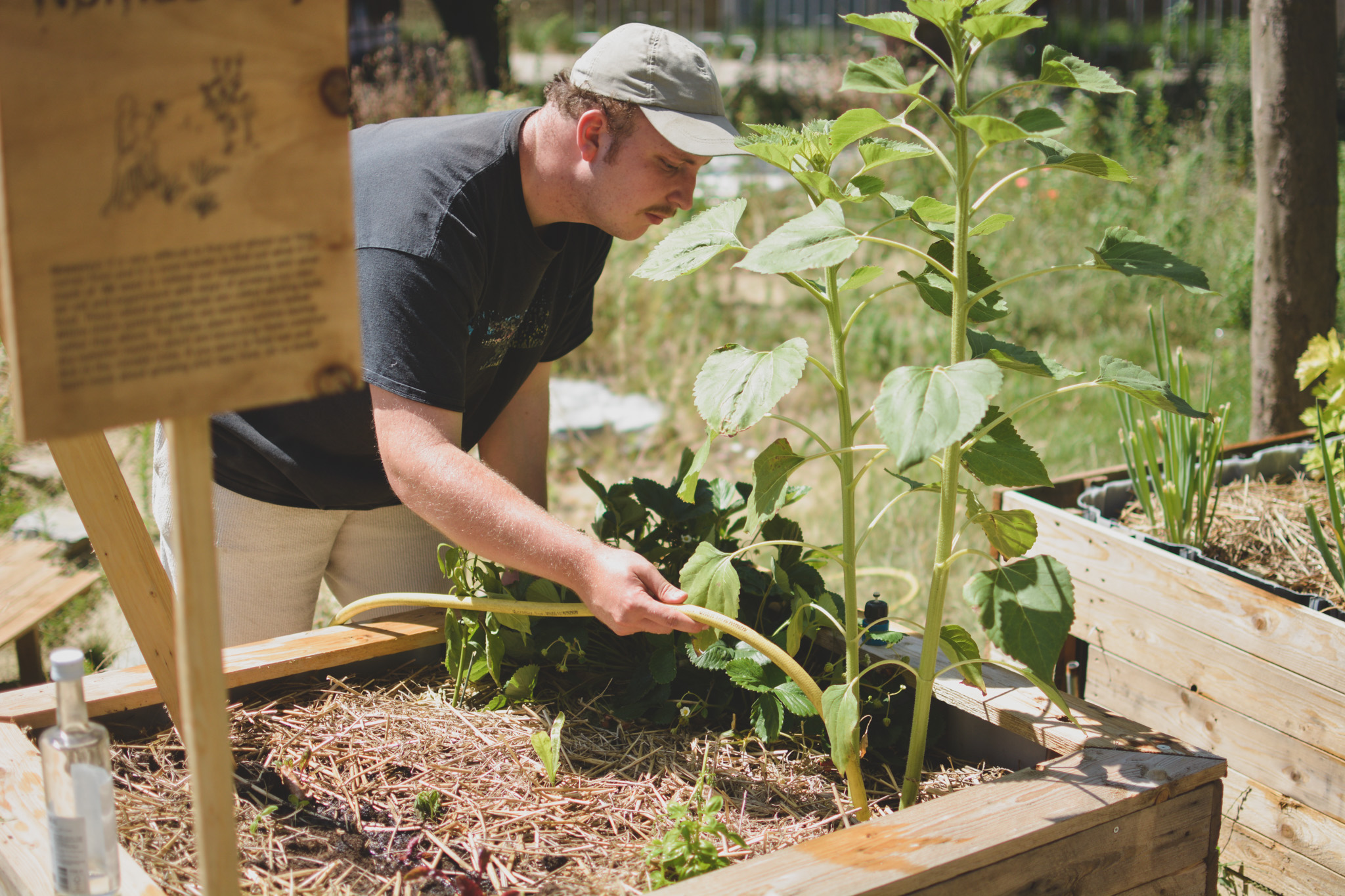
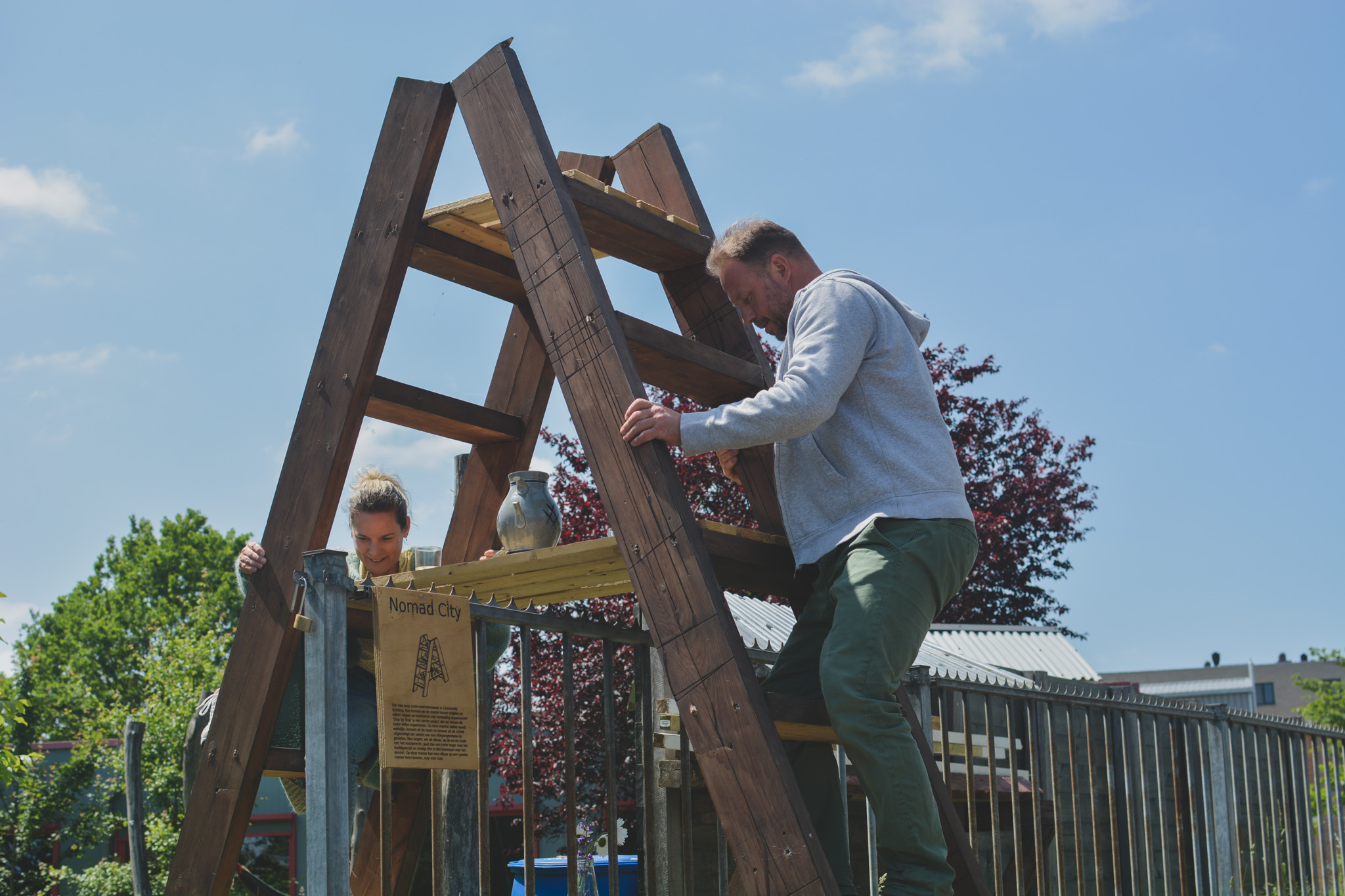
Nomad City, a research on sustainable and communal living, 2023-...
In today’s world, we realize more than ever that our current way of life is not sustainable. Everyday we are overrun with an array of pressing issues such as extreme weather, energy and material shortages, health issues, overconsumption, soil exhaustion, the alienation from nature and our fellow humans...The list of challenges stretches on endlessly, and in the face of these formidable obstacles, it is natural to feel overwhelmed and powerless. Nevertheless, amid this complexity, our everyday choices harbor an incredible capacity for transformative change. Yet it remains very difficult to alter human behavior. We are creatures of habit, living in a system that evolves at a painstakingly slow pace. A big city is often struggling to keep up with our rapidly changing world. When we implement meaningful adjustments within such a large structure it often feels like an uphill battle. It is within this context that the Nomad City initiative took shape. Within our project we wanted to enact both structural and behavioral changes within a small community and observe the far-reaching ripples it could create within the surrounding city. Over the course of nine months we designed and constructed a nomadic village that traveled between two unused plots of land, owned by the universities of PXL and UCLL in the city of Hasselt. Within this unique setting we invited artists, designers and architects to research permaculture, household structures, education and community building.
By organizing workshops, lectures, interventions and events we wanted to initiate a space in which art, education and life were once again intertwined. Through our presence amidst neighborhoods and schools, we wanted to inject a pin prick of inspiration in the heart of a city, planting seeds in both soil and souls, thus hoping to change the perspective towards our natural environment and our fellow citizens.
Central to our approach was the belief that education should have the chance to emerge naturally from life itself. The rise of big educational institutions has given us an evolution in the transmission of knowledge, but somewhere along the line they seem to have lost something essential. When a certain topic has the interest of an individual, chances are very low that the same topic will be addressed in one of the classes. By organizing workshops and lectures fueled by intrinsic motivation and curiosity, we wanted to reimagine education as a dynamic, hands-on experience. Our actions were guided by the three fundamental permaculture principles: take care of the earth; take care of the people and use only what you need (while returning surplus when possible). By designing structures with sustainable materials, cooking with wild edible plants and organizing sow and harvest festivals we wanted to make people aware of the natural environment from which we are dependent.
Follow Nomad City on Instagram
More info on nomadcity.be
In today’s world, we realize more than ever that our current way of life is not sustainable. Everyday we are overrun with an array of pressing issues such as extreme weather, energy and material shortages, health issues, overconsumption, soil exhaustion, the alienation from nature and our fellow humans...The list of challenges stretches on endlessly, and in the face of these formidable obstacles, it is natural to feel overwhelmed and powerless. Nevertheless, amid this complexity, our everyday choices harbor an incredible capacity for transformative change. Yet it remains very difficult to alter human behavior. We are creatures of habit, living in a system that evolves at a painstakingly slow pace. A big city is often struggling to keep up with our rapidly changing world. When we implement meaningful adjustments within such a large structure it often feels like an uphill battle. It is within this context that the Nomad City initiative took shape. Within our project we wanted to enact both structural and behavioral changes within a small community and observe the far-reaching ripples it could create within the surrounding city. Over the course of nine months we designed and constructed a nomadic village that traveled between two unused plots of land, owned by the universities of PXL and UCLL in the city of Hasselt. Within this unique setting we invited artists, designers and architects to research permaculture, household structures, education and community building.
By organizing workshops, lectures, interventions and events we wanted to initiate a space in which art, education and life were once again intertwined. Through our presence amidst neighborhoods and schools, we wanted to inject a pin prick of inspiration in the heart of a city, planting seeds in both soil and souls, thus hoping to change the perspective towards our natural environment and our fellow citizens.
Central to our approach was the belief that education should have the chance to emerge naturally from life itself. The rise of big educational institutions has given us an evolution in the transmission of knowledge, but somewhere along the line they seem to have lost something essential. When a certain topic has the interest of an individual, chances are very low that the same topic will be addressed in one of the classes. By organizing workshops and lectures fueled by intrinsic motivation and curiosity, we wanted to reimagine education as a dynamic, hands-on experience. Our actions were guided by the three fundamental permaculture principles: take care of the earth; take care of the people and use only what you need (while returning surplus when possible). By designing structures with sustainable materials, cooking with wild edible plants and organizing sow and harvest festivals we wanted to make people aware of the natural environment from which we are dependent.
Follow Nomad City on Instagram
More info on nomadcity.be






